Lace making has a very long history throughout Europe, from Belgium to France, from England to Italy. Le Marche could not be any less and if you are looking for the real craft of lace making, your destination must only be Offida.
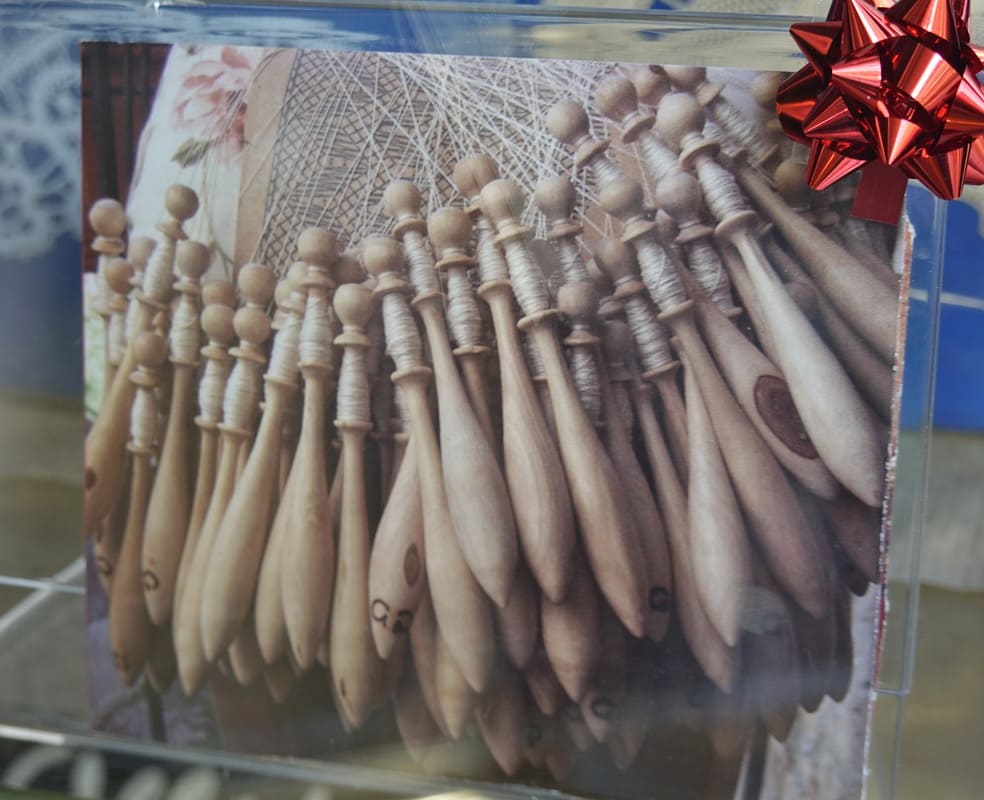
Located in the south of Le Marche, on top of a hill, Offida has a hazy past. As the several theories refer, its origins may go back to the Pelasgians (a people who once migrated from Asia Minor to Italy), or the Etruscans or the Piceni or the Romans or even the Longobards. And surprisingly enough there is an explanation for every theory: in excavated necropolises, remains of a temple dedicated to Ophite, Roman and Longobard finds.
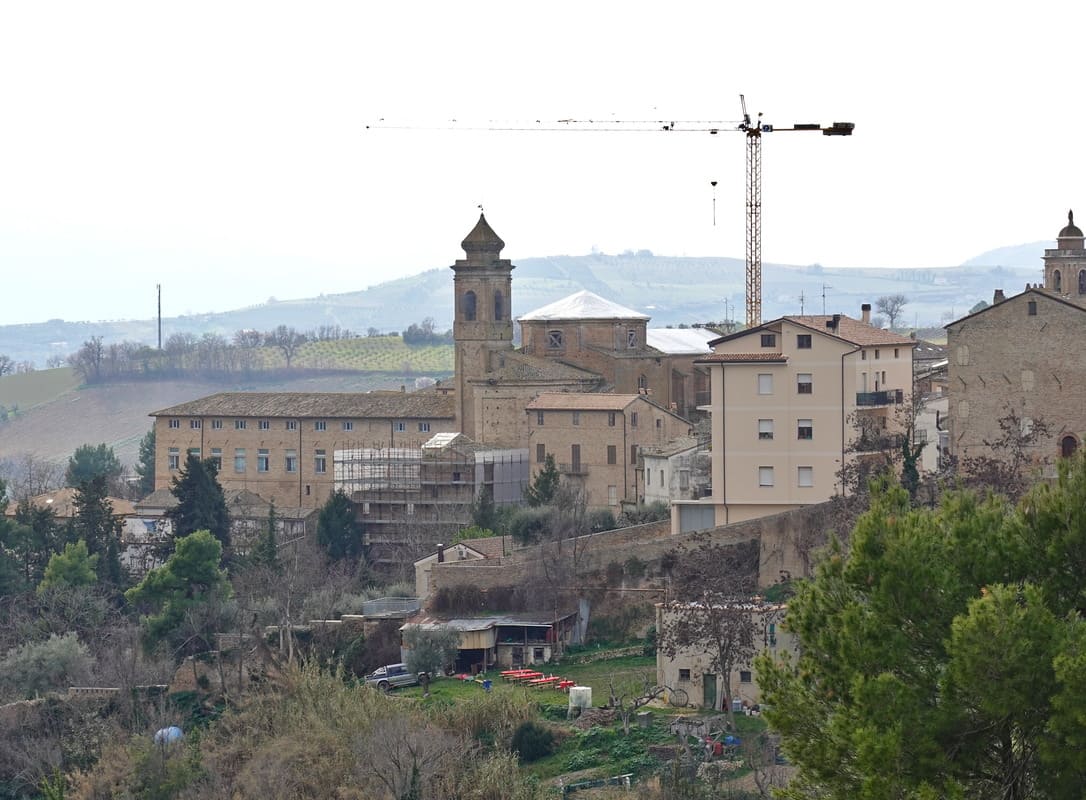
Offida is first mentioned in 920 in the Chronicles of the Abbey of Farfa. In 1039 Longino d’Azone donated a large part of his possessions, including the castle of Offida, to these Benedictines Monks. Between the 13th and 16th centuries, this municipality took sides with Fermo in the battle against Ascoli. In 1831 Pope Gregory XVI hands Offida the official city rights. This city is slowly developing from a rural community into a small industrial city, working mainly with the tobacco and silk industry with the silkworm nurseries.
What made Offida famous, however, is a whole other industry, the bobbin lace!
Recently Isabelle and Erik decided to explore the south of Le Marche, kicking off in Offida. There they parked for free almost opposite the lace-making monument on the city walls from the 12th-17th century. What an imposing bastion that of the famous Baccio Pontelli: this city must have meant something in the Middle Ages!
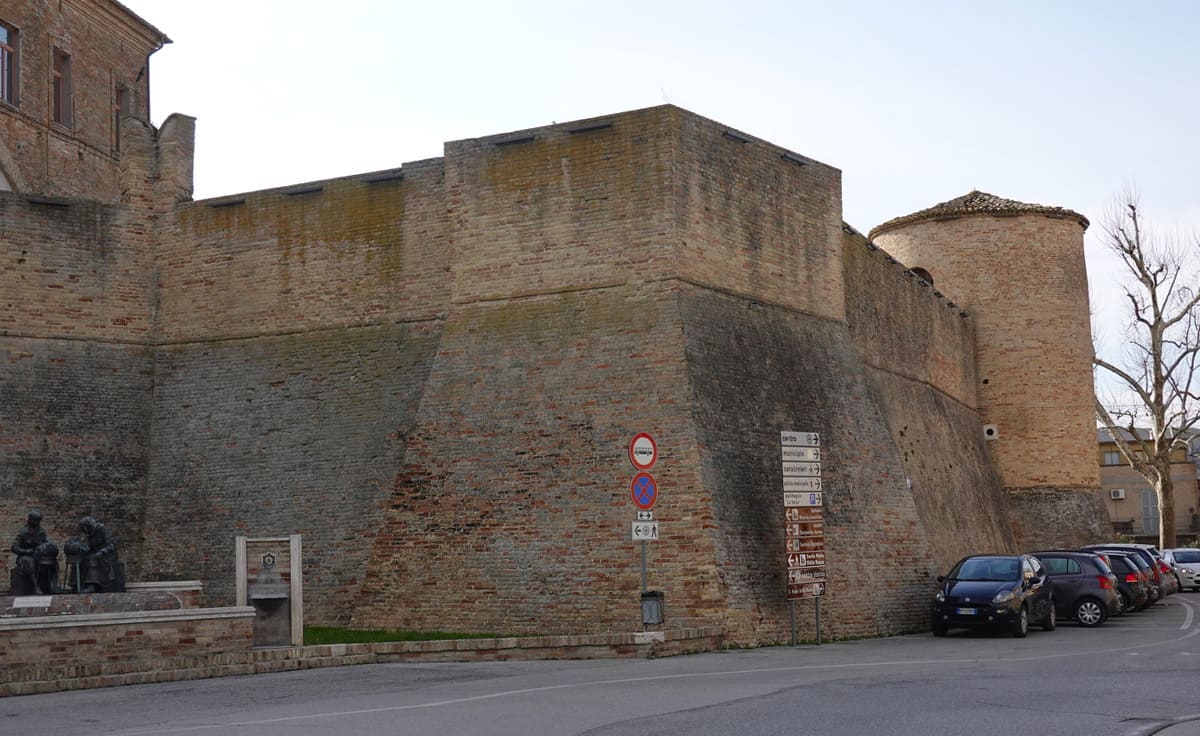
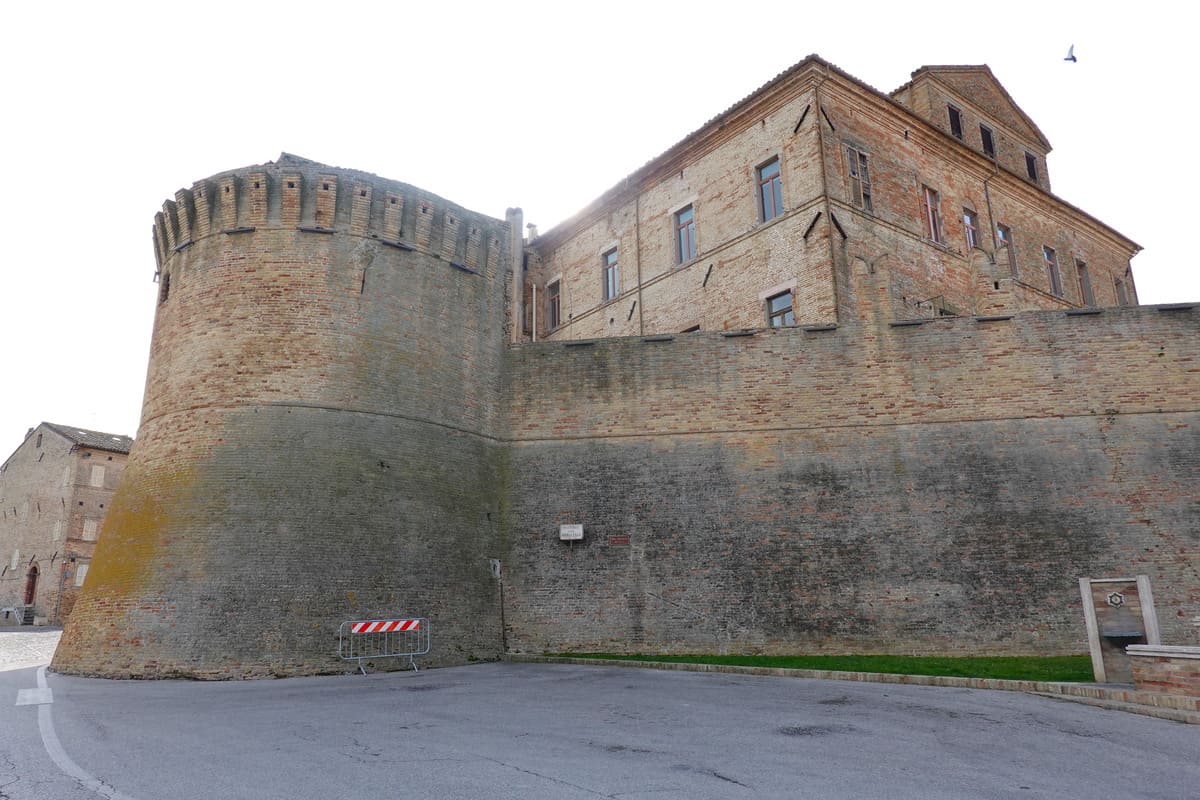

Aldo Sergiacomi created the beautiful monument dedicated to the lace makers of Offida, who have always provided wealth in the past. It represents 3 generations: the grandmother who passes on her knowledge to the daughter, who in turn passes it on to her child.
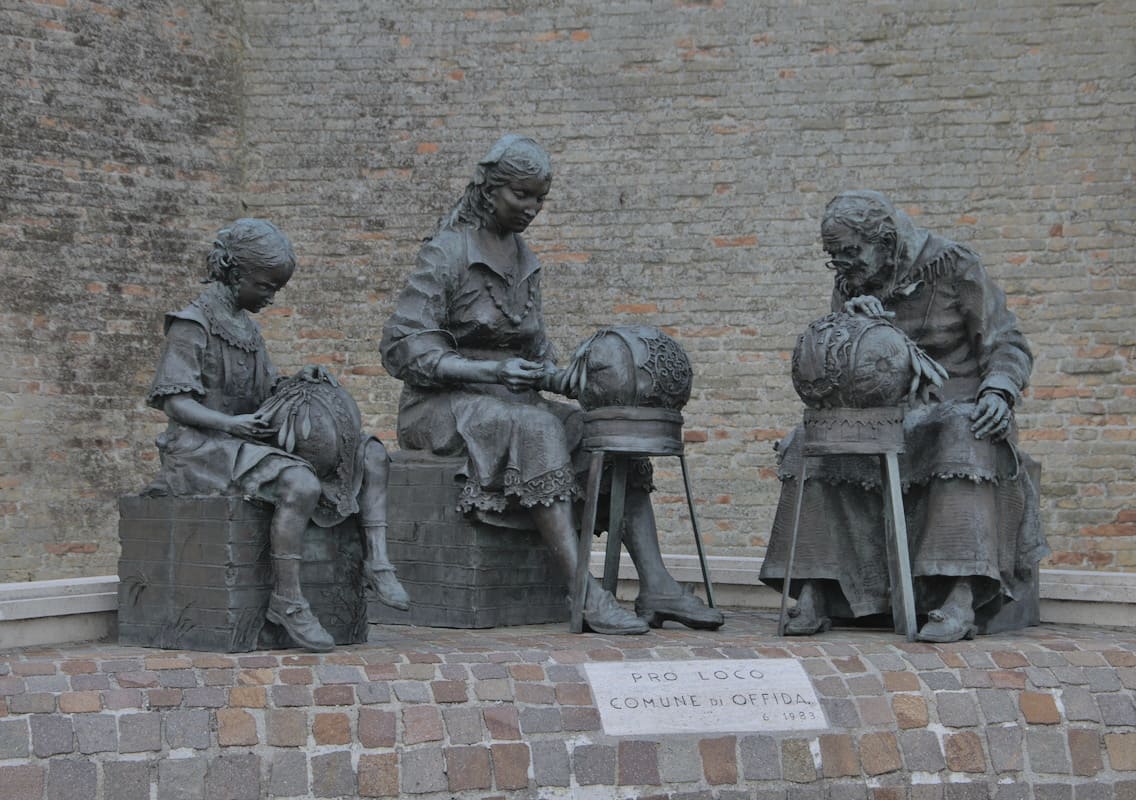
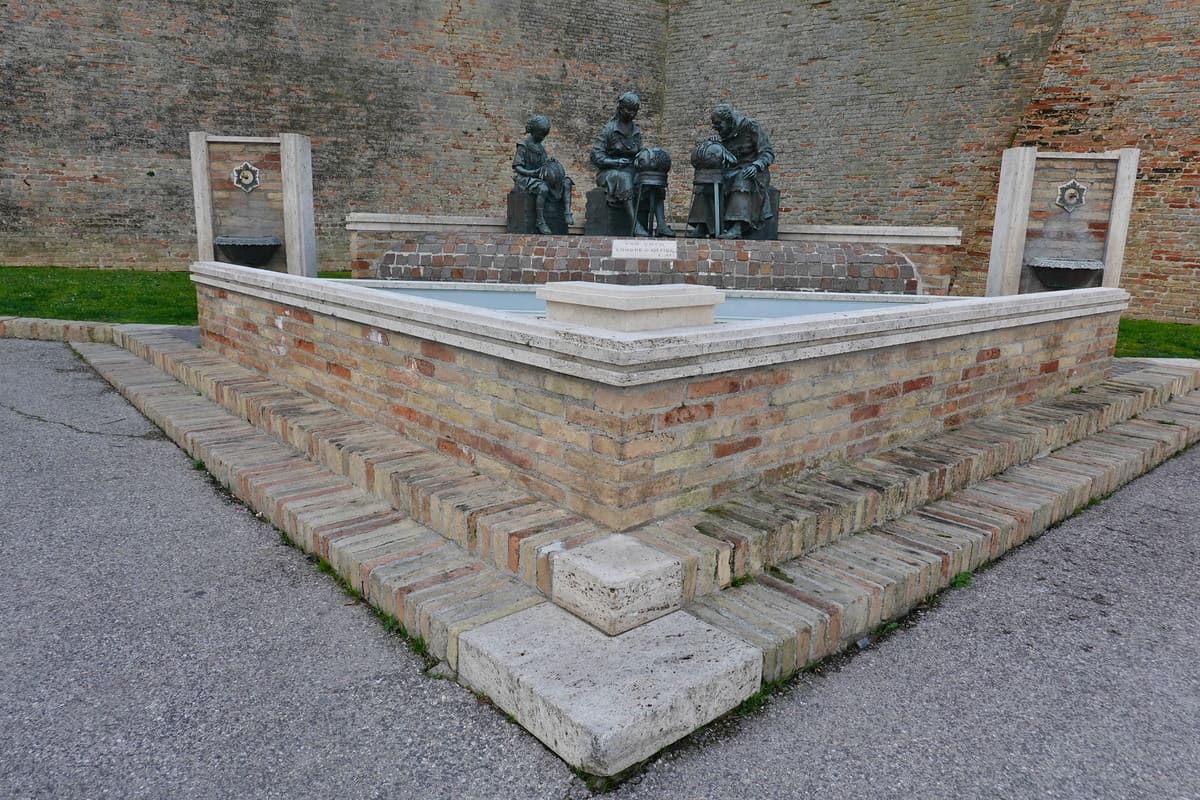

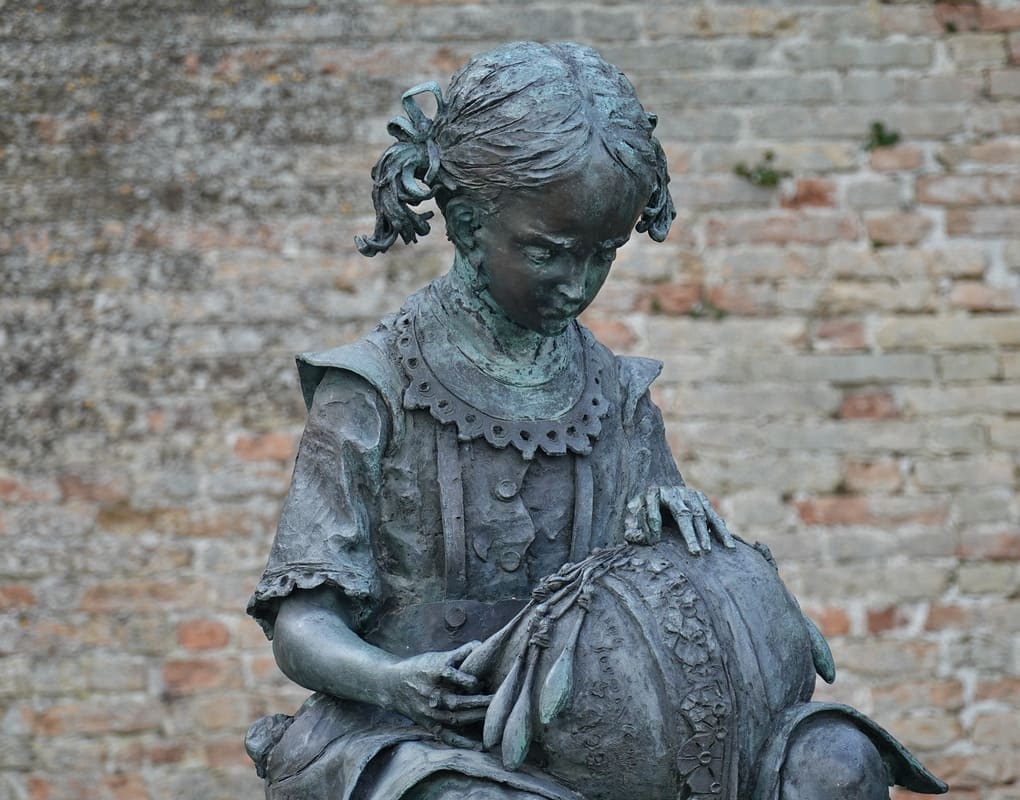

Erik and Isabelle entered the city where they heard brass band music in the distance. They noticed from the confetti on the street that they had just missed a carnival party, another important feature of this city.
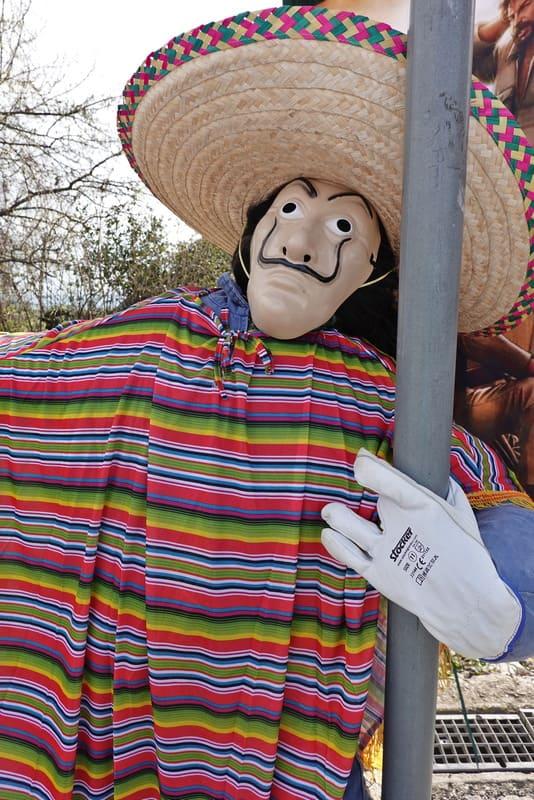
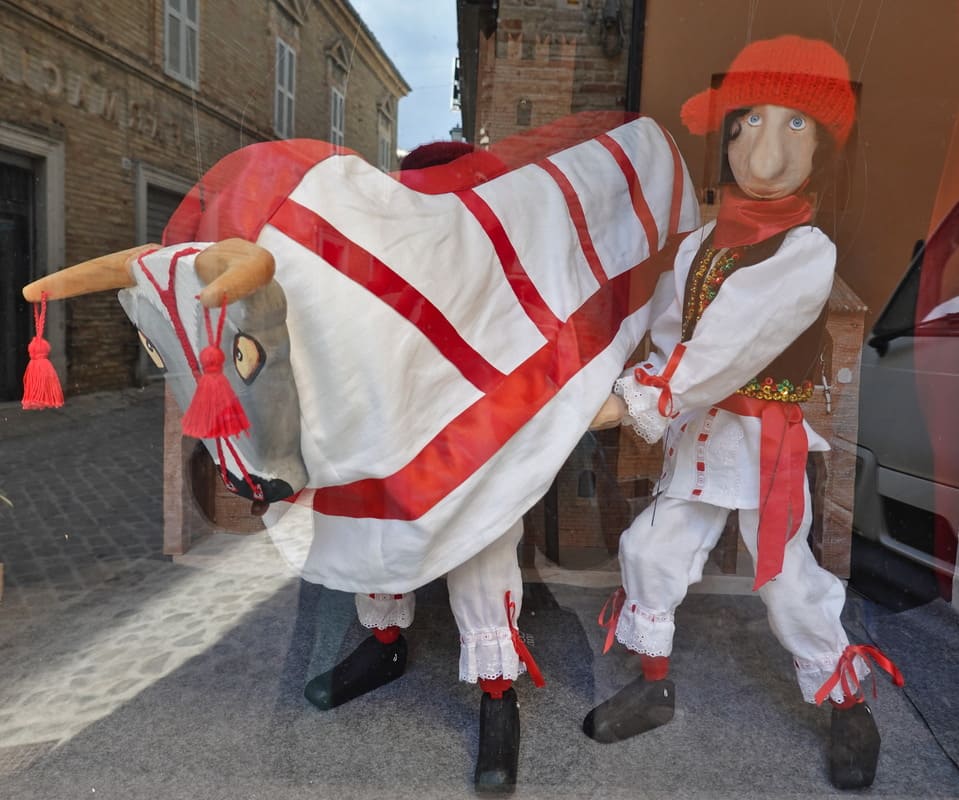
The celebration dates back to 1500. It starts on January 17th and ends on Fat Tuesday. The Friday after Fat Thursday is the Run of the Lu Bov Fint (the fake cow). Fat Tuesday is also worth the presence for an amazing show that you can watch on these You Tube films… Unfortunately, the 2021 and 2022 editions were canceled due to COVID-19.
That’s how they ended up at the imposing old hospital from the 18th century…


…following Corso Serpente Aureo, the main street, to Piazza del Popolo, the main square. Many Offidans took an aperitivo under the arcades of the Palazzo Comunale (13-15th century) or the town hall. The beautiful theater Serpente Aureo from 1820 is also located here.
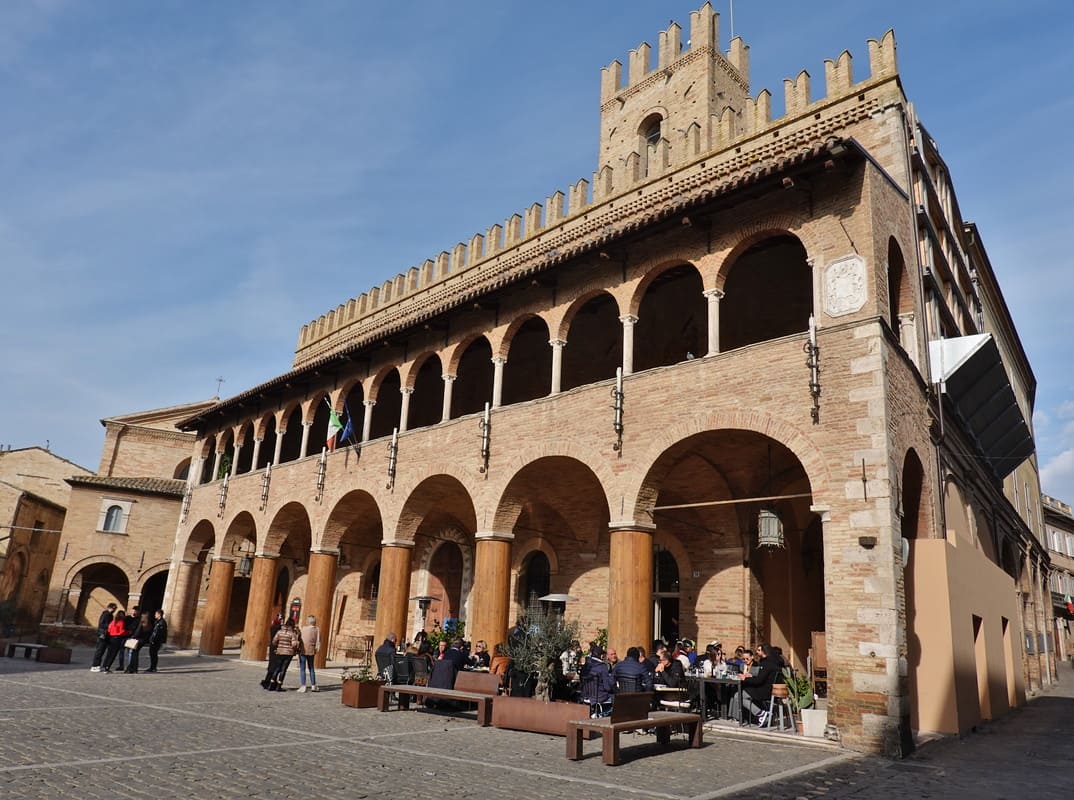
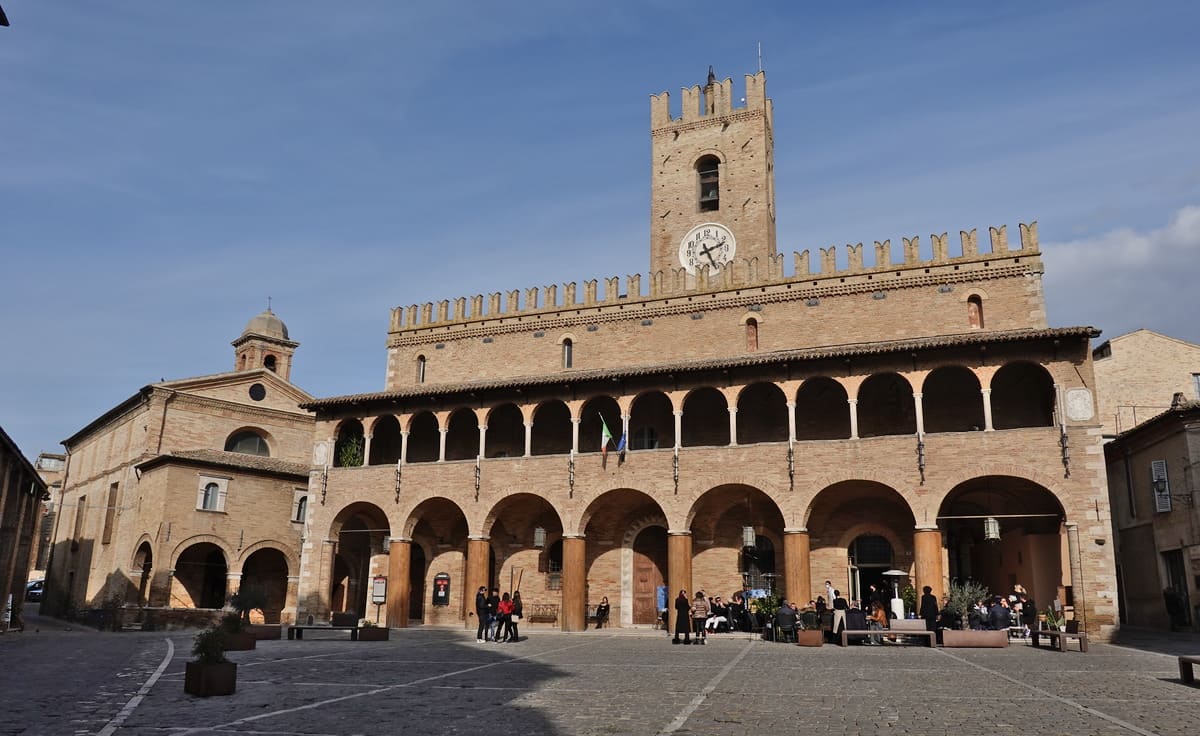
In Chiesa dell’Addolorata from the 15th century there is the 19th century carrying berrie with a dead Christ statue, which is carried in the procession on Good Friday.
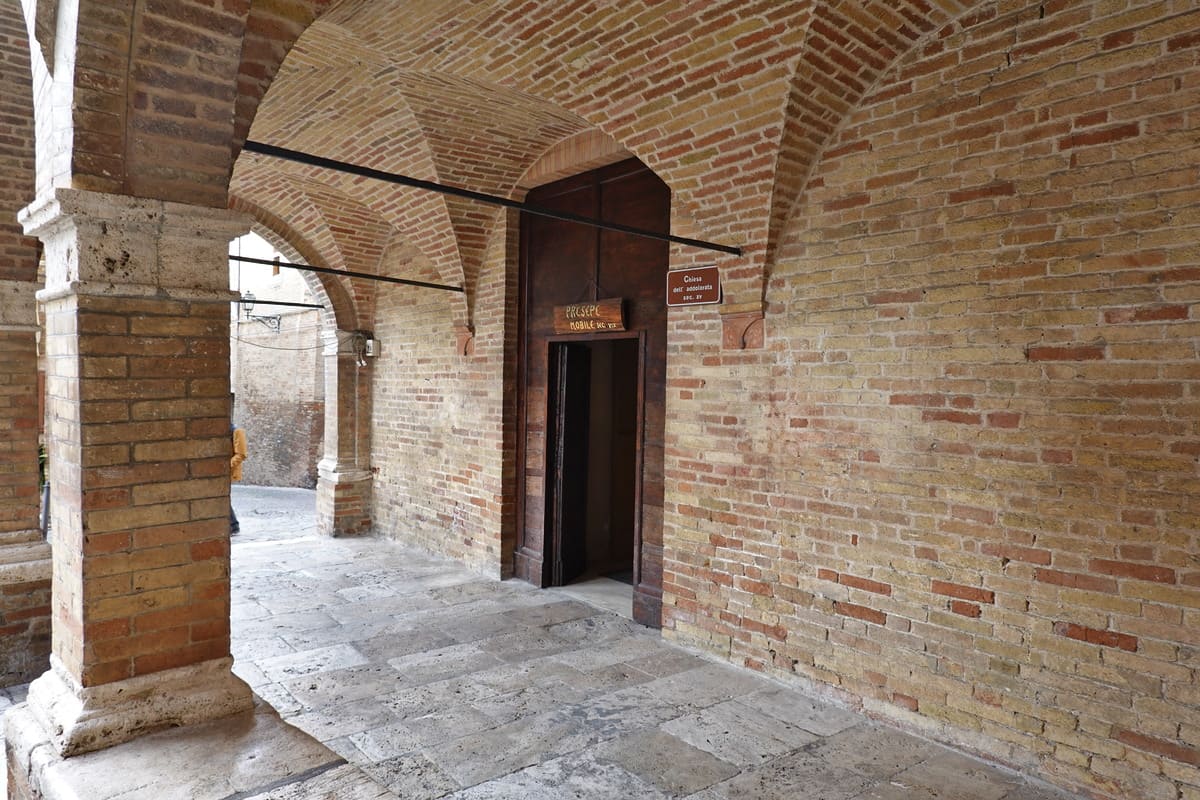
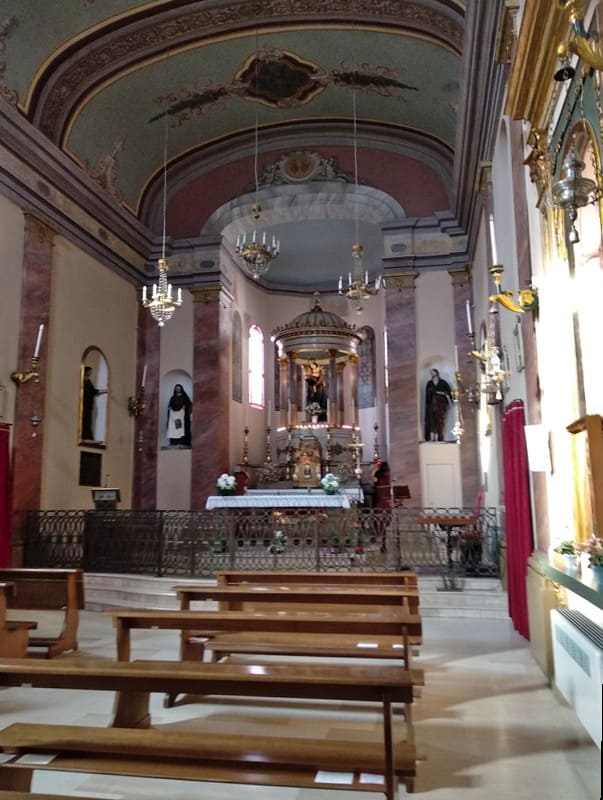
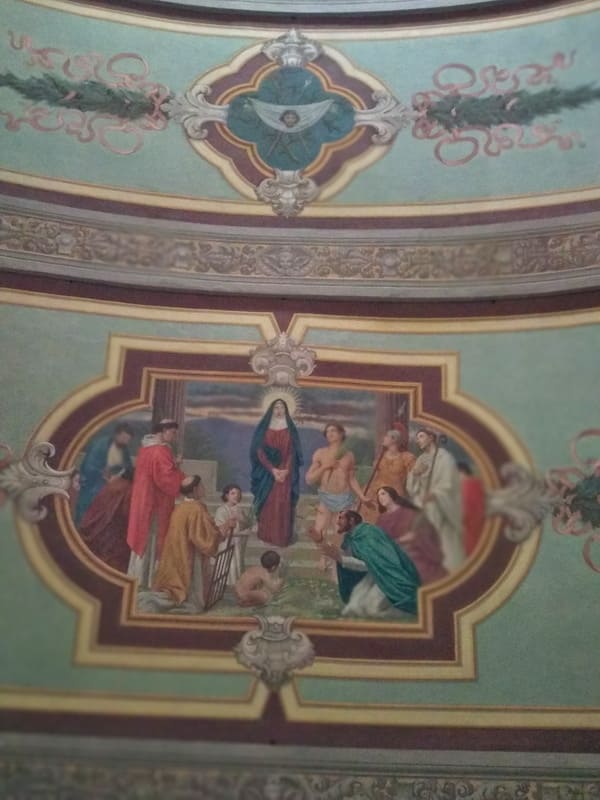
The next church is the Collegiata from the 18th century. At a first glance the frescoes can be confused with a trompe oeil, but on a closer inspection, they turn out to be beautiful sculptures, made by the Milanese Fontana and Bernasconi. The richly decorated dome also provided a lot of light.
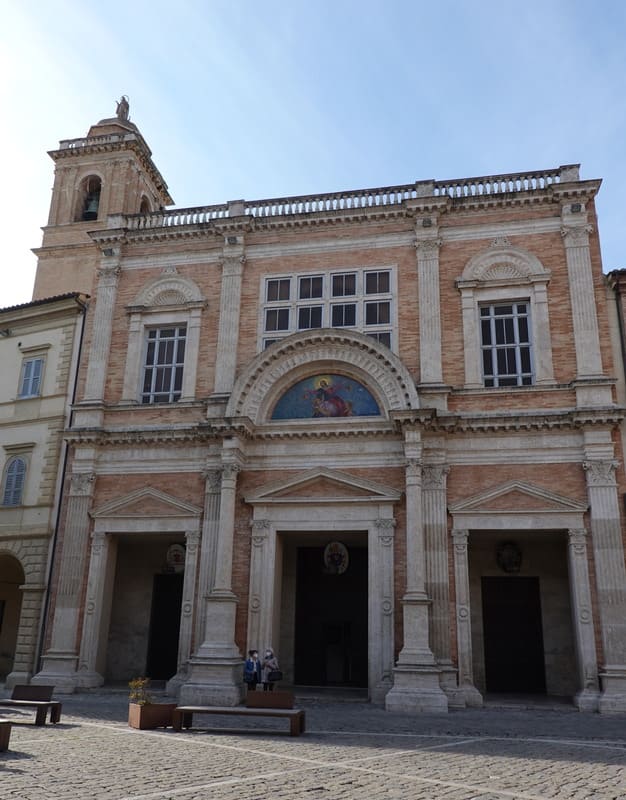
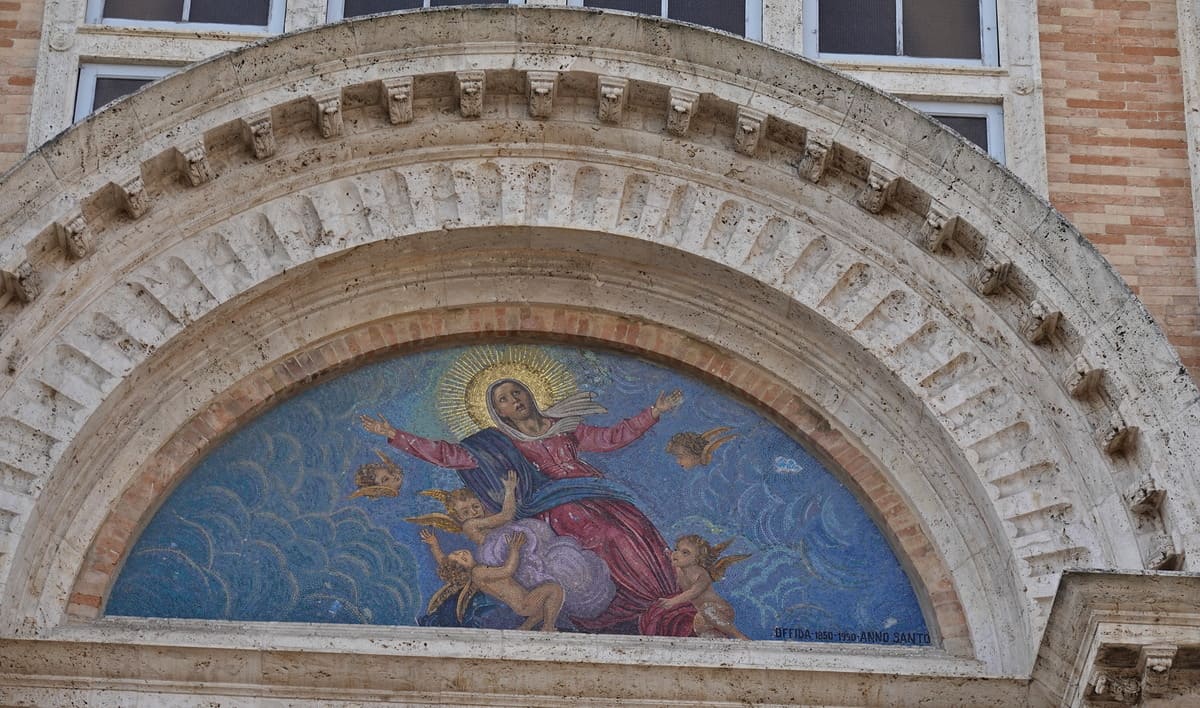
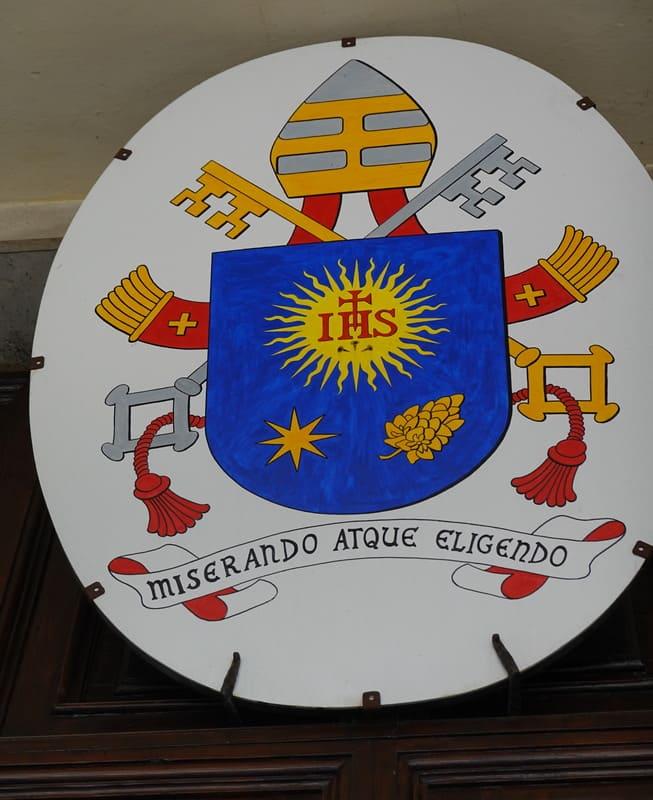
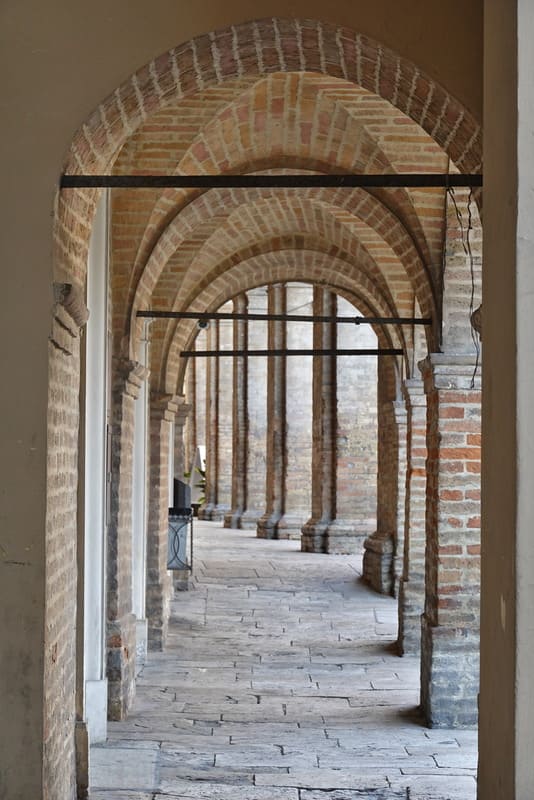
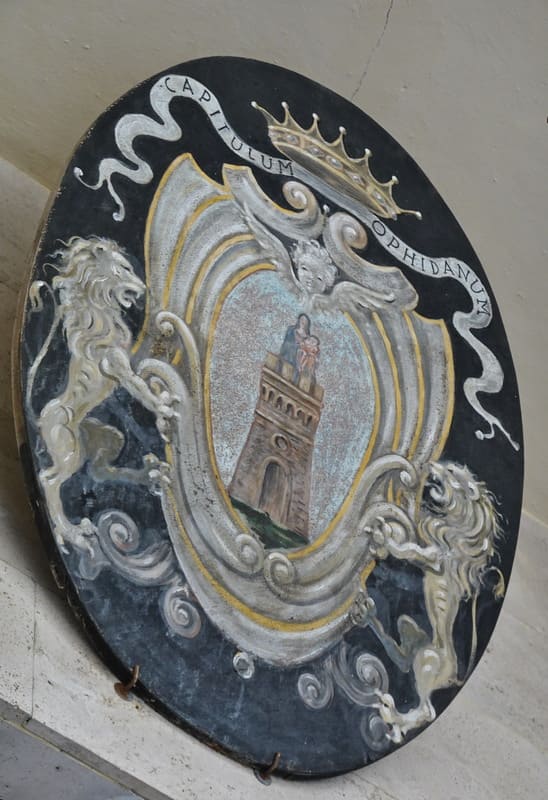
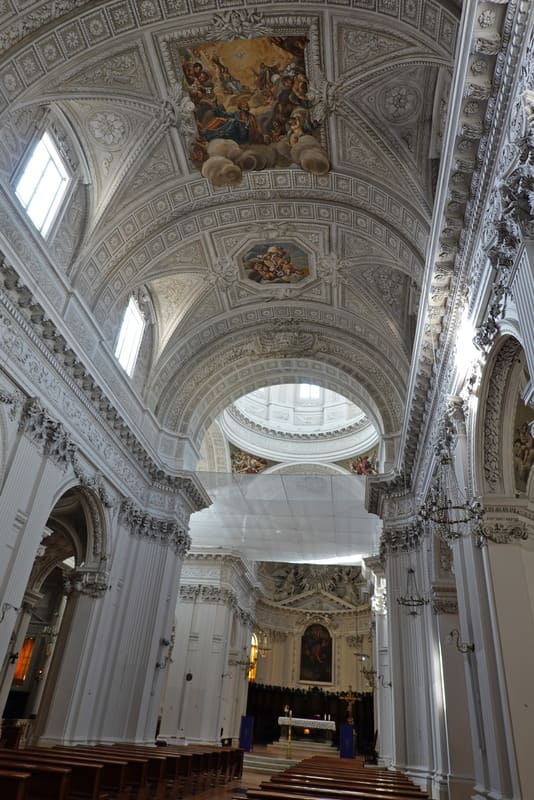
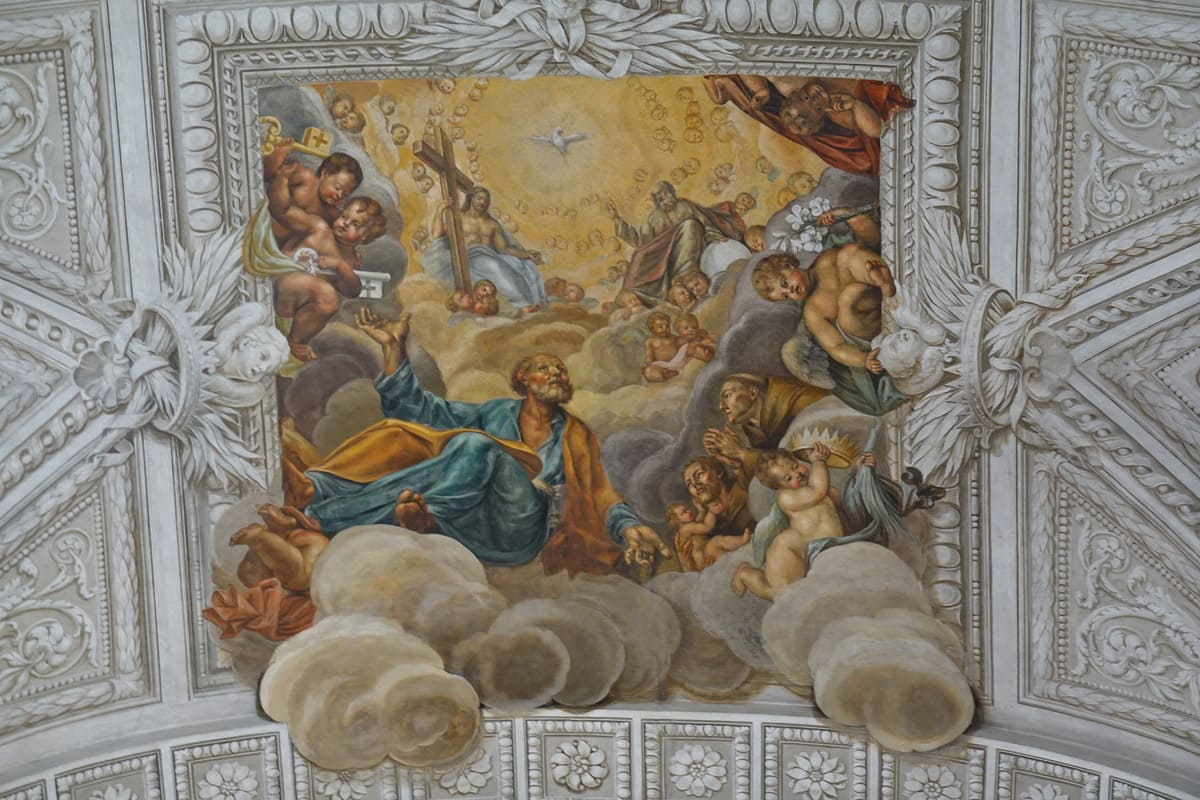
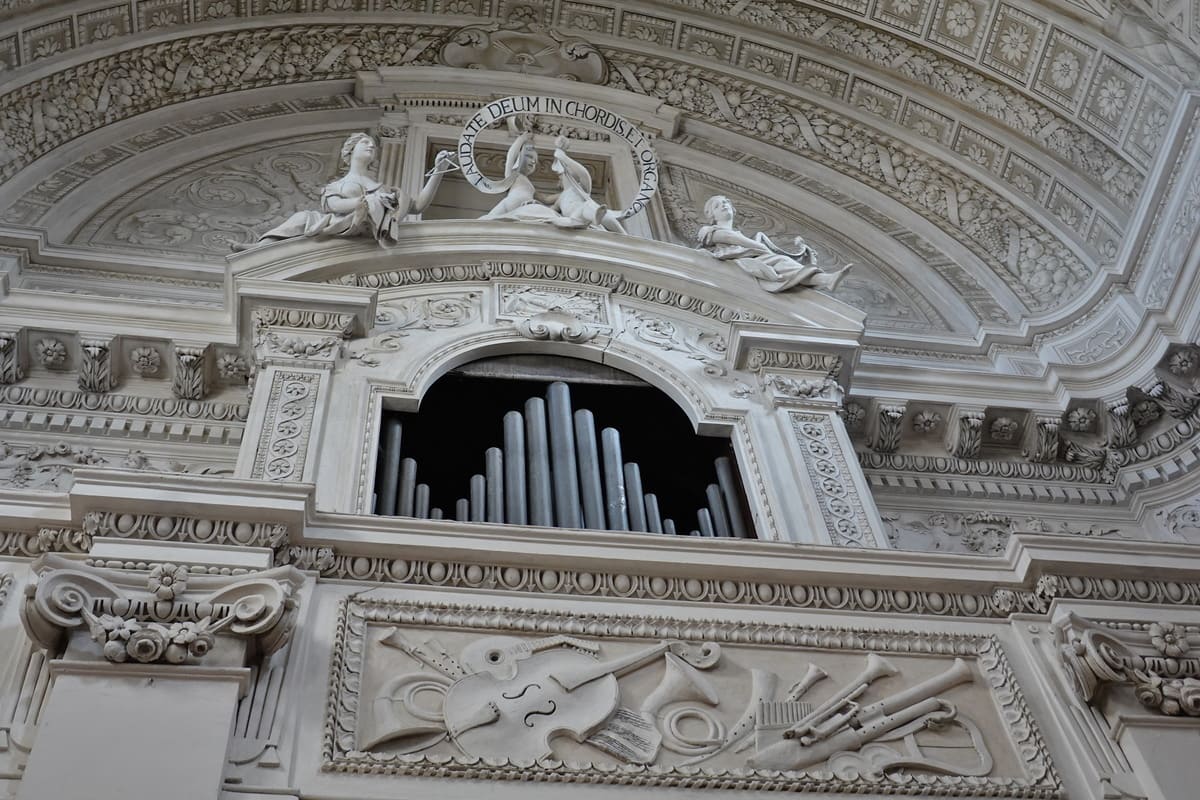
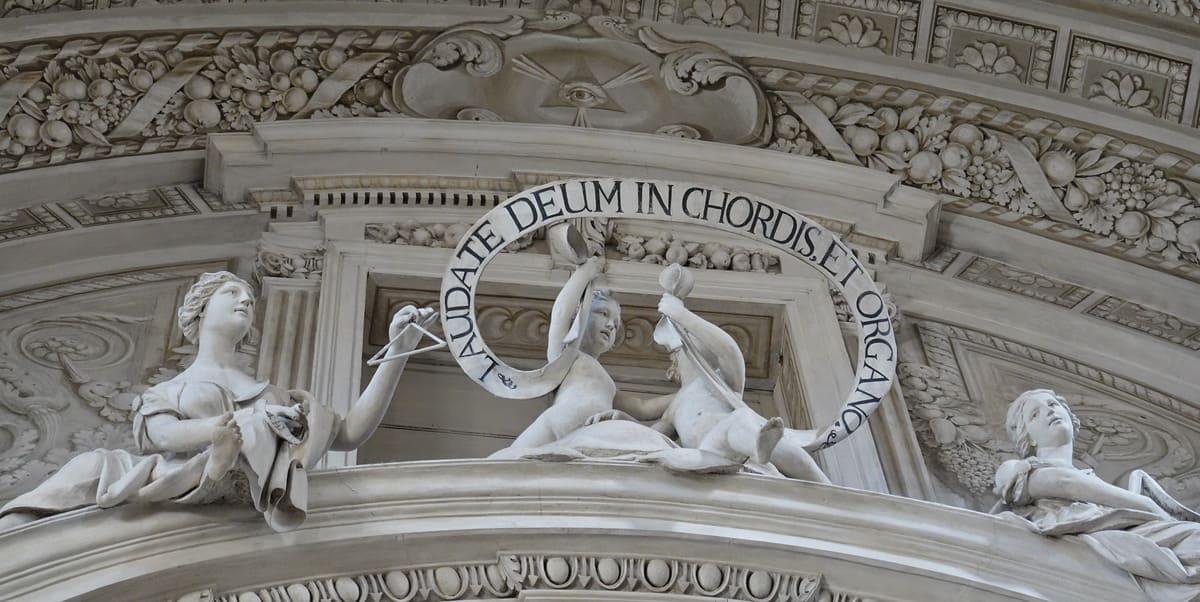
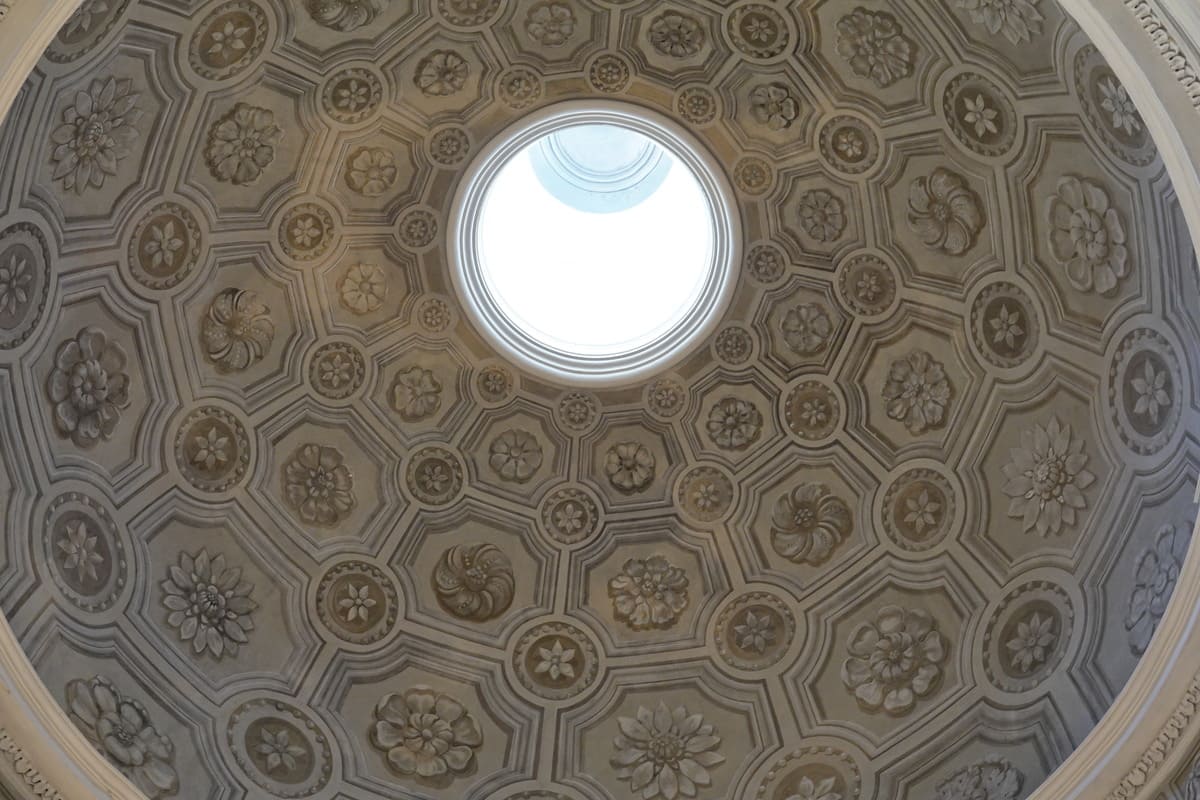

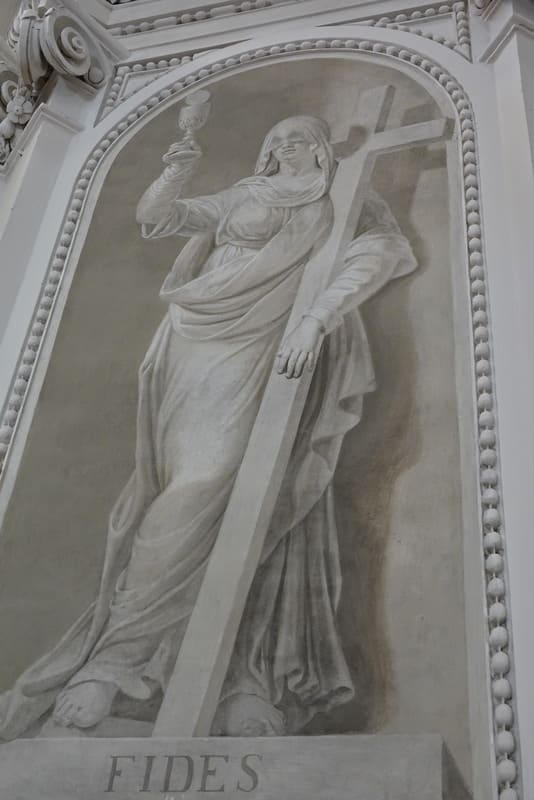
The next eye-catcher was the Palio of the Miracolo, the banner of the miracle. In 1840 Giuseppe Videri from Offida won the Palio competition in Fermo. We already talked about the palio tradition in Le Marche in one of our very first posts, do you remember it? In 1850, the Madonna depicted on the palio is said to have moved her eyes back and forth several times. Later she made the cholera disappear.

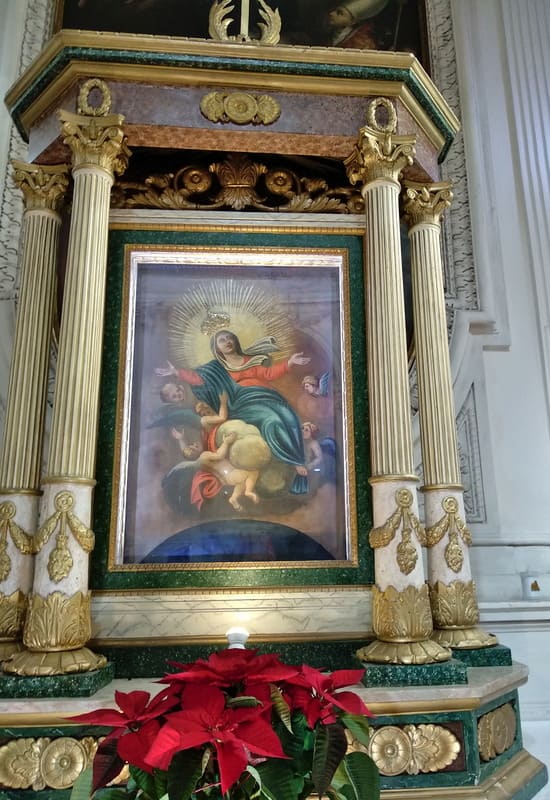
Isabelle then discovered a special statue made by the Chilean Sergio Tapa Radic, once befriended by the famous poet Pablo Neruda. In the 1970s, the artist migrated to Italy where he now lives in San Marcello, in the middle of Le Marche. It is a bronze cast from a plaster mold from 2004, the first cast of which was in the church of Ripatransone. The last earthquake in 2016 destroyed this church, after which the statue was moved to the Vatican museums after restoration. Now he decided to make a new cast again to temporarily display it here.
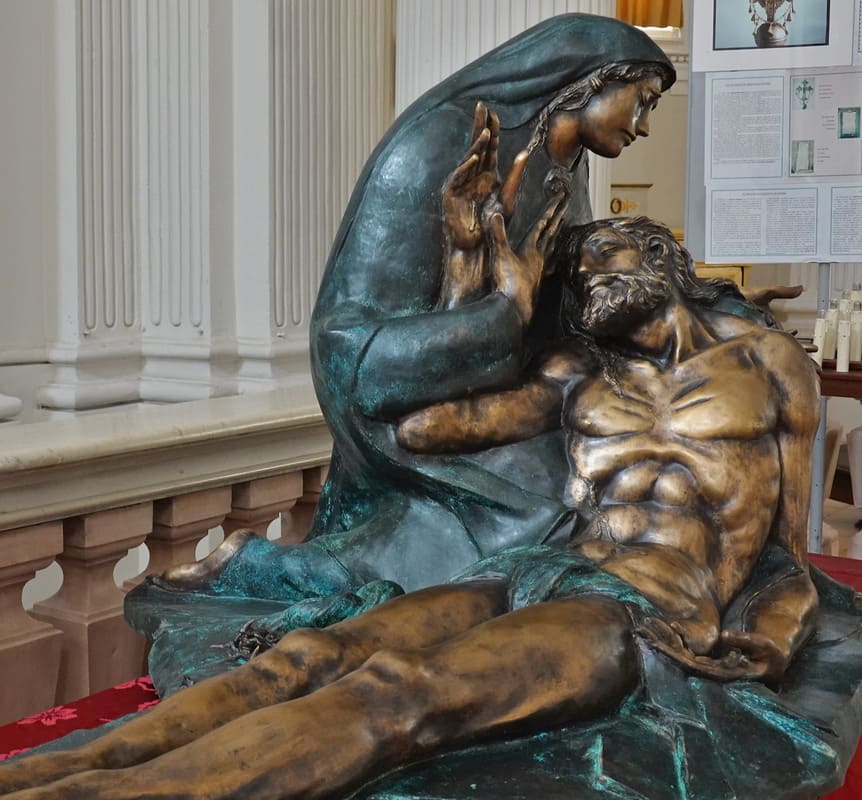
The crypt of this church contained the biggest surprise, a copy of the cave of Lourdes, which was hewn from stones from the nearest Monte Ascensione.
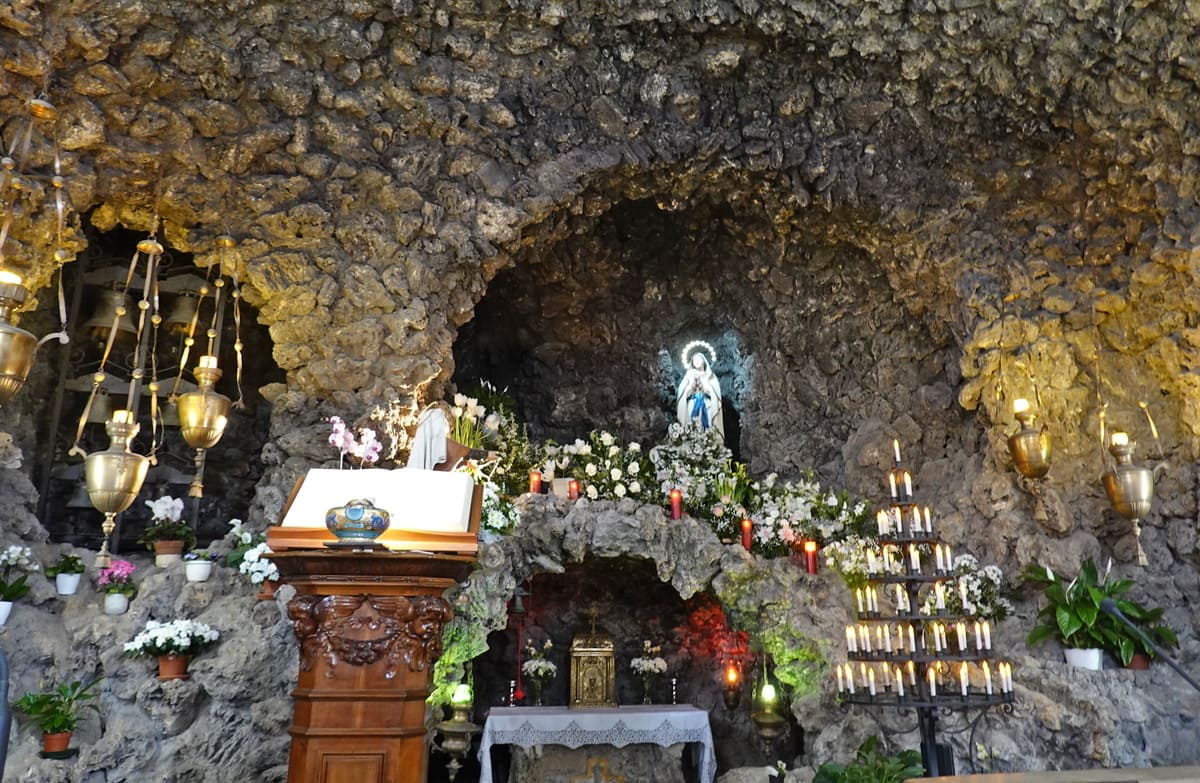
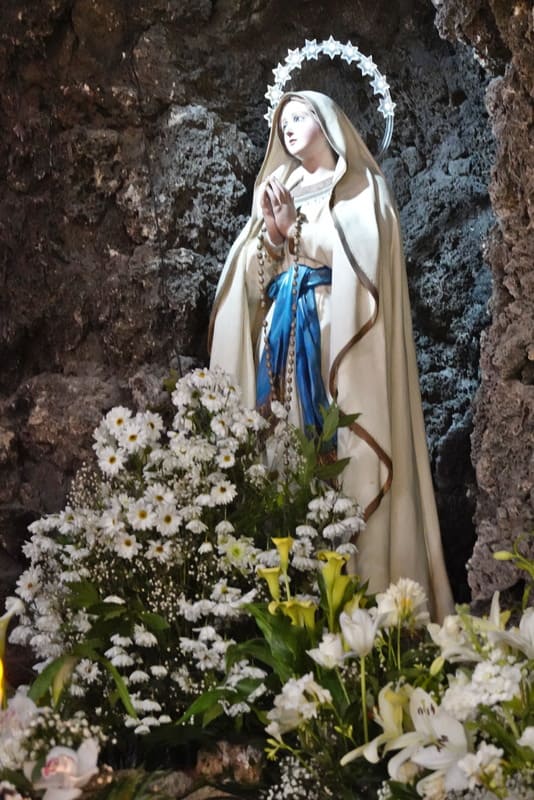
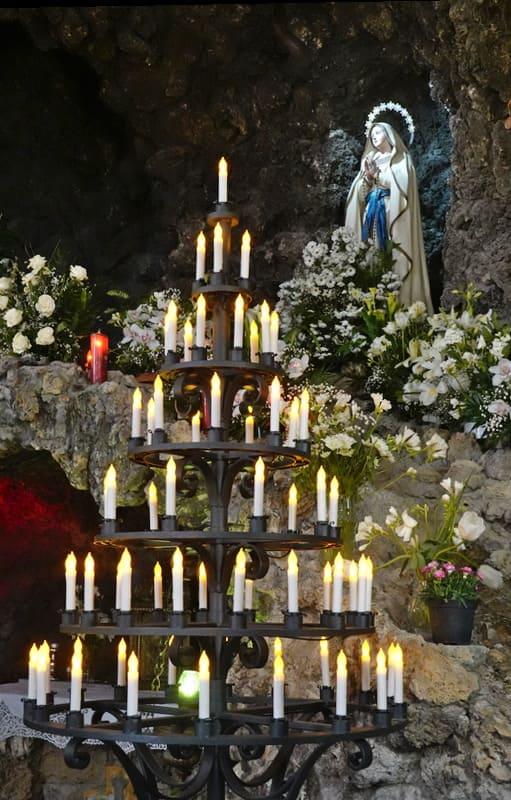
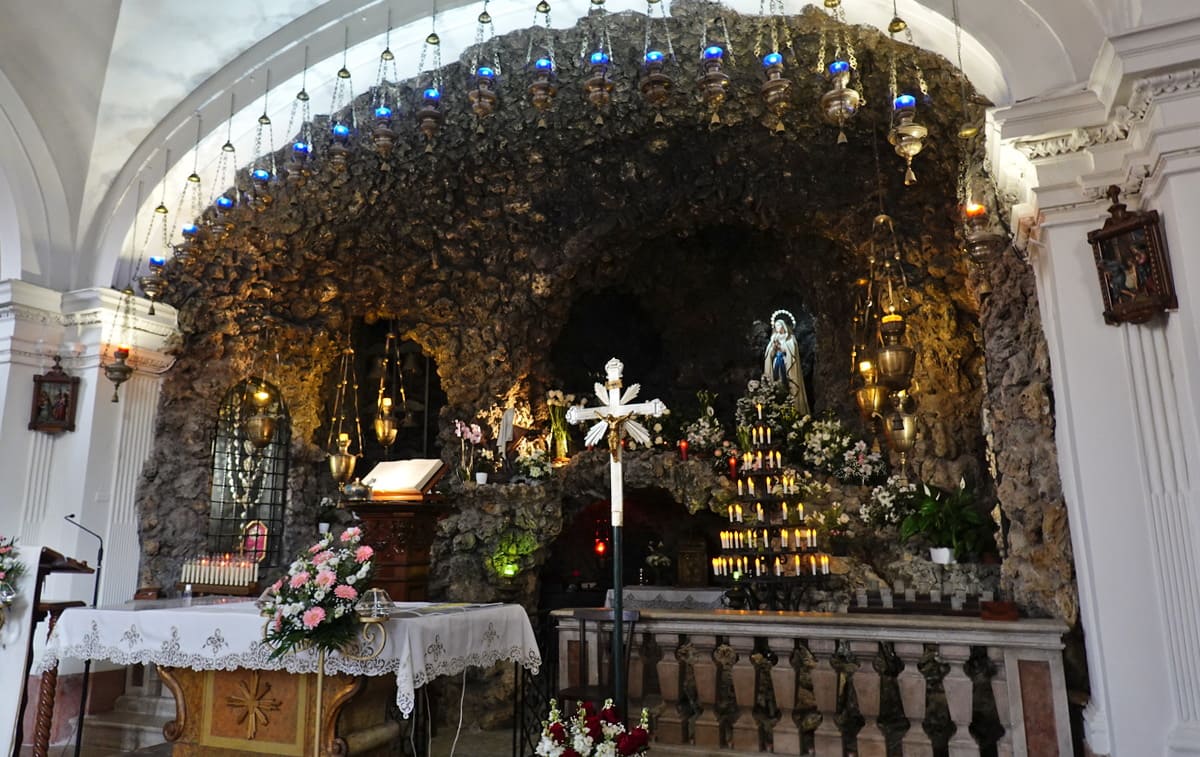
Back upstairs, Isabelle visited the different side chapels, all of which were completely different from each other, including a mechanical Christmas manger.
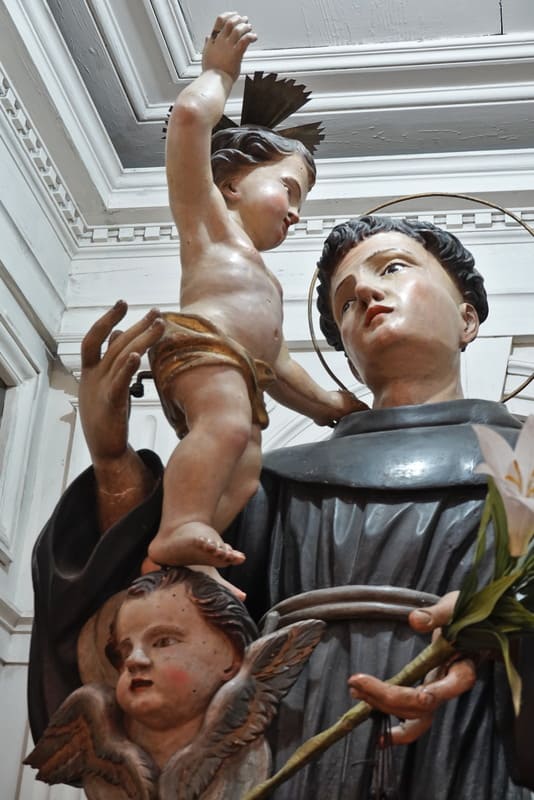

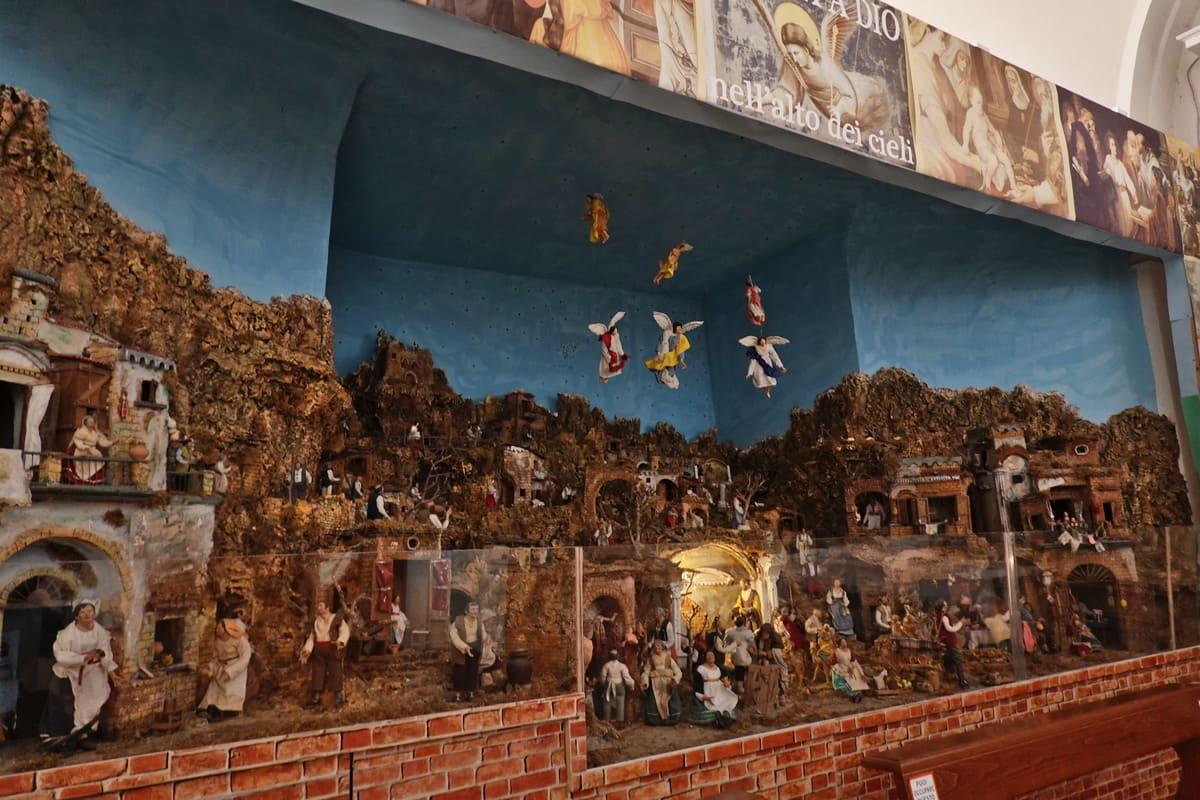
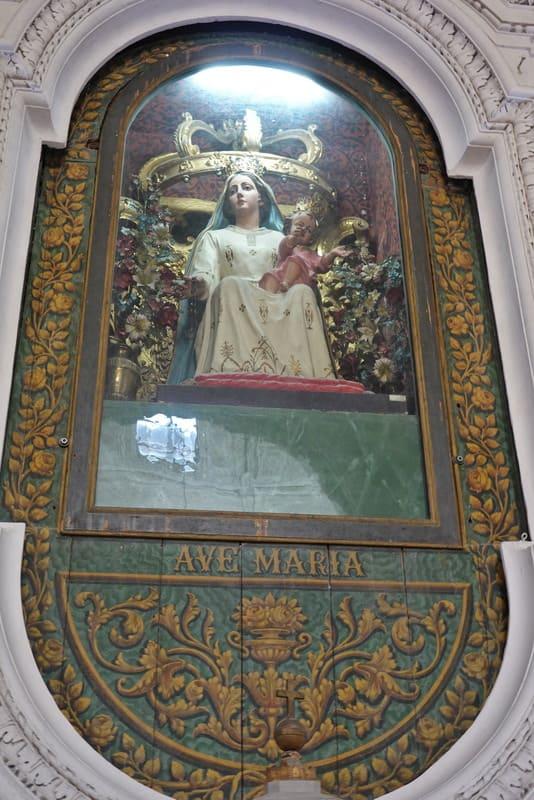
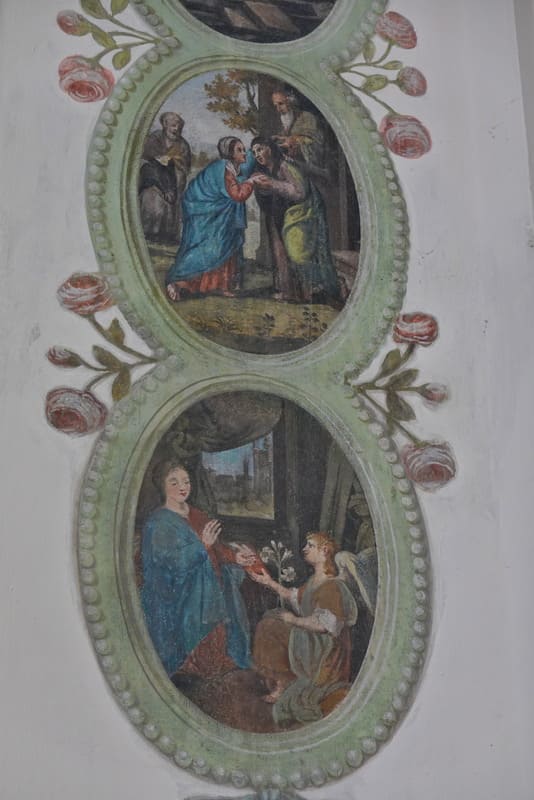
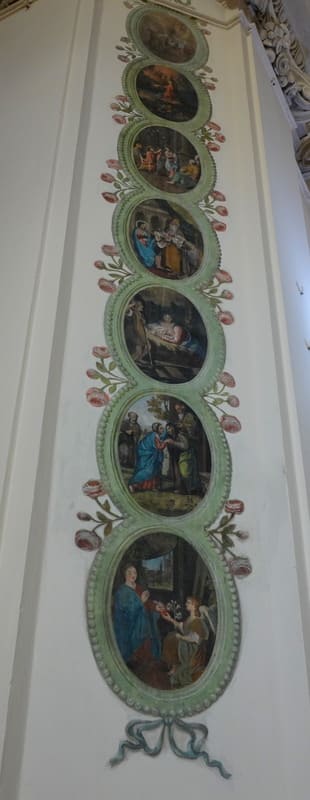
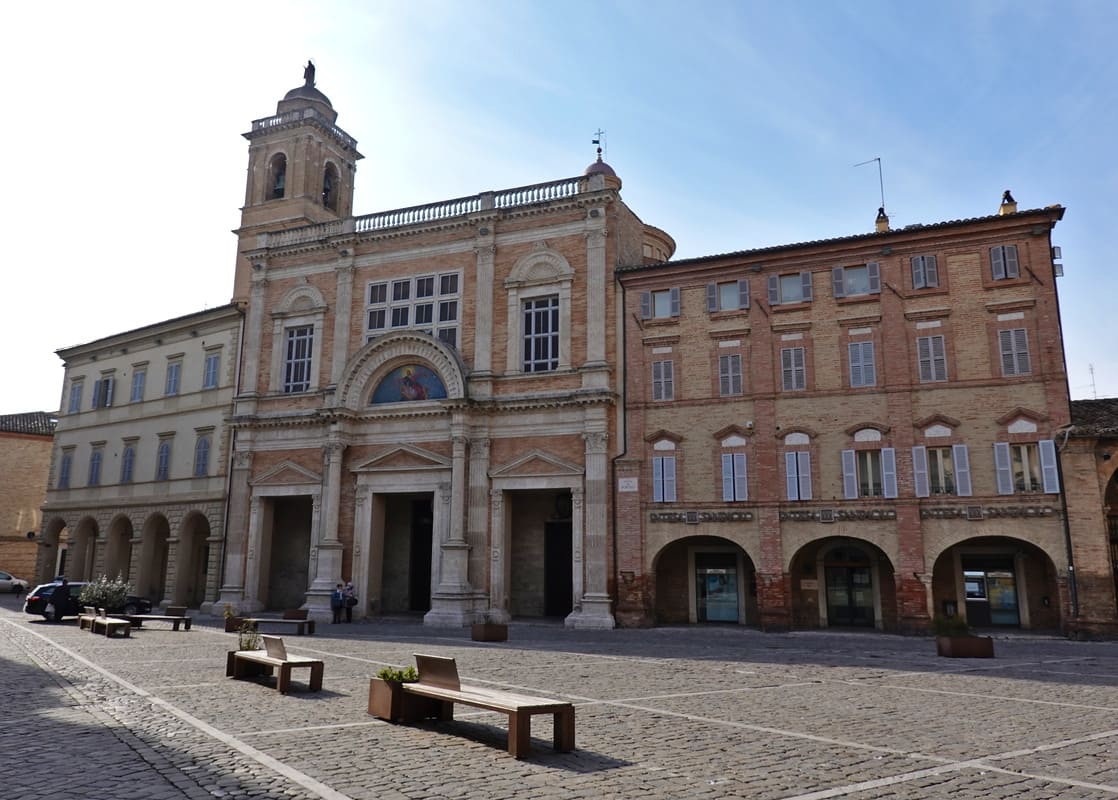
Leaving the piazza to turn into Via Roma, there are many historic palazzi and the famous Italian alleys, called vicoli, windows and fountains.


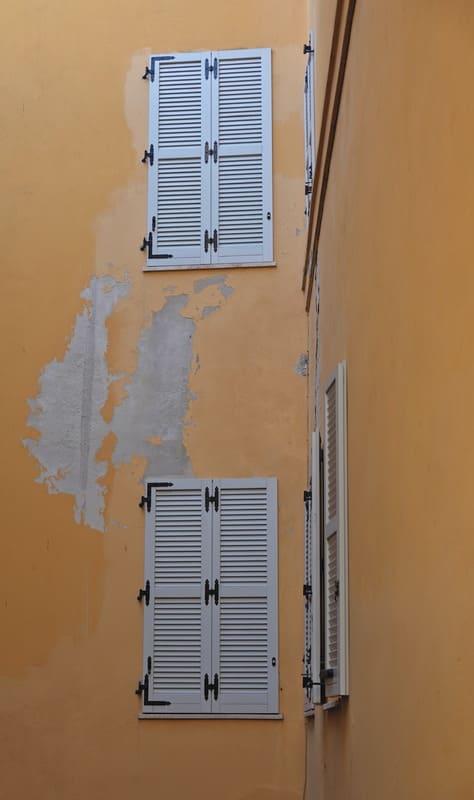
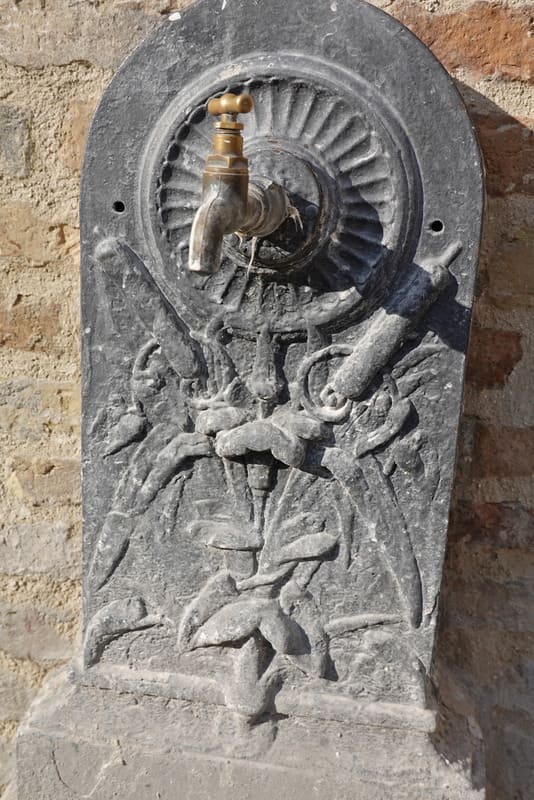
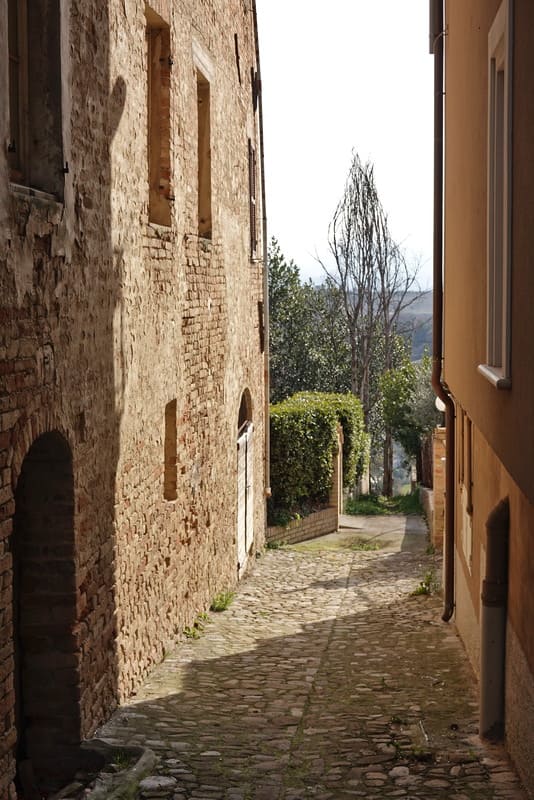
At number 17 there is the 4-part museum of Offida: the 18th century palazzo De Castellotti-Paganelli with the art gallery, the archaeological museum, the lace-making museum and those of folk traditions. Unfortunately it seems like it has been closed for a long time…
Our final destination, for which most eventually come to Offida, was at the very end of the Via Roma: the Chiesa di Santa Maria della Rocca, a gem from the 14th century. The original church was part of the donation in 1039 by Longino D’Azone to the Benedictines of Farfa. In 1330, after the demolition of the first church building, the current structure was created, which was to be larger and higher.
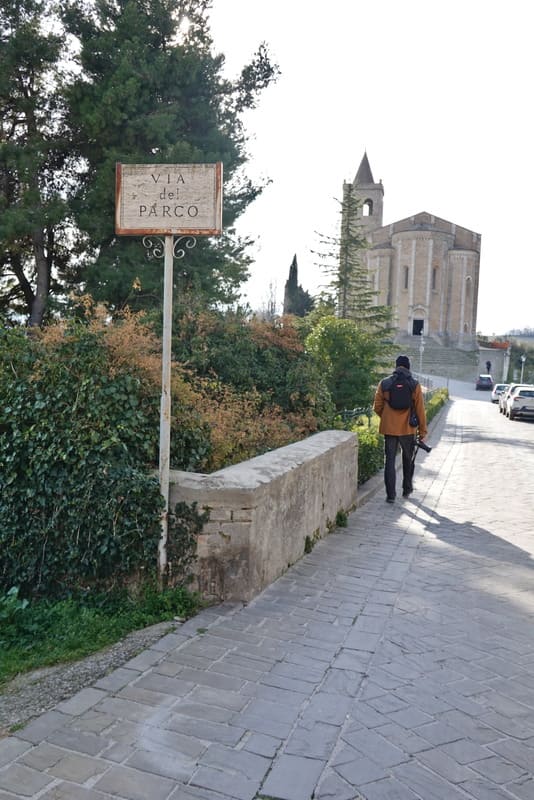
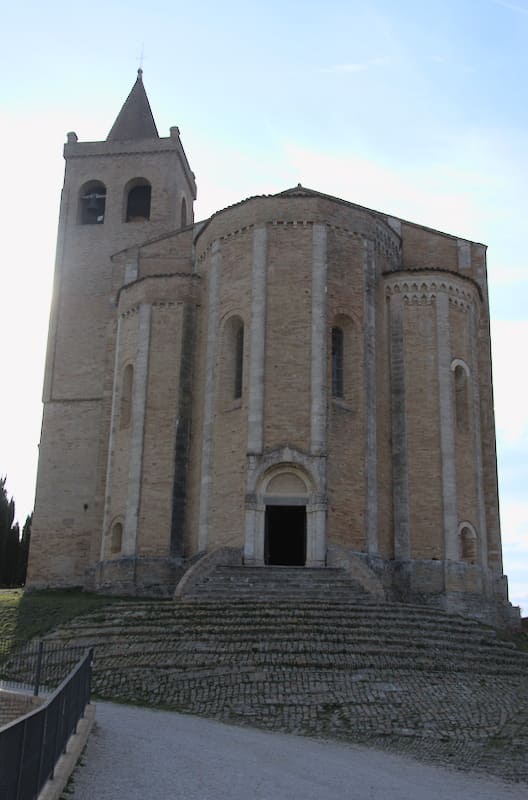


What makes the Santa Maria Della Rocca so special? The division into lower and upper church, whereby the lower part, also called the crypt, was no longer accessible from the 16th century. Centuries later, this changed via a spiral staircase. In the 18th century, the living quarters of the monks were demolished and changes were made to the upper church. After the earthquake of 1943, the top of the bell tower was repaired, but it would be lower than before.
The church is now entered through a beautiful portal (14th century) in the crypt or lower church. Isabelle immediately noticed the reinforcing structures that were put in place after the last earthquake of 2016.
Columns with Romanesque and Gothic crossbow vaults everywhere.
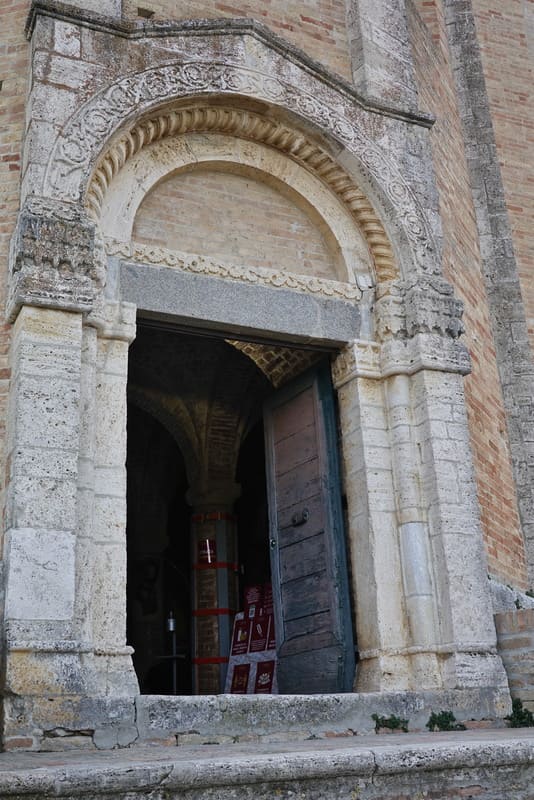
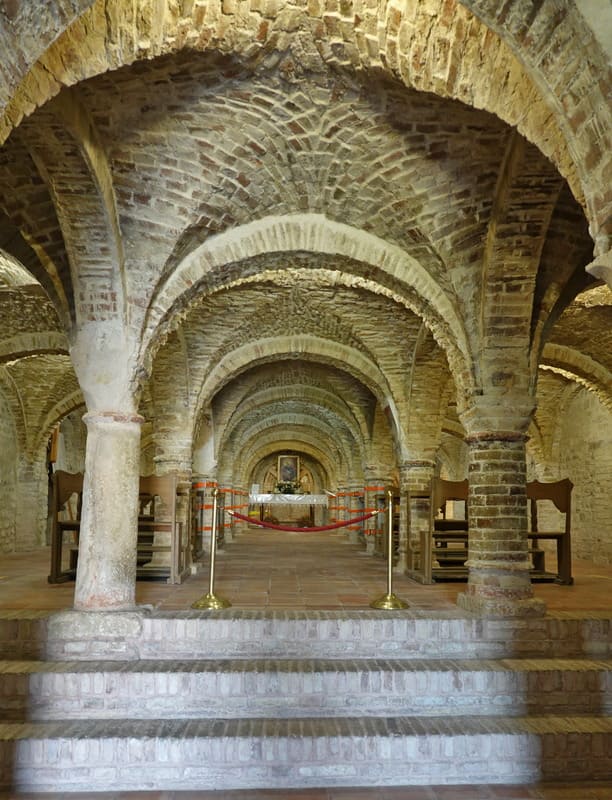



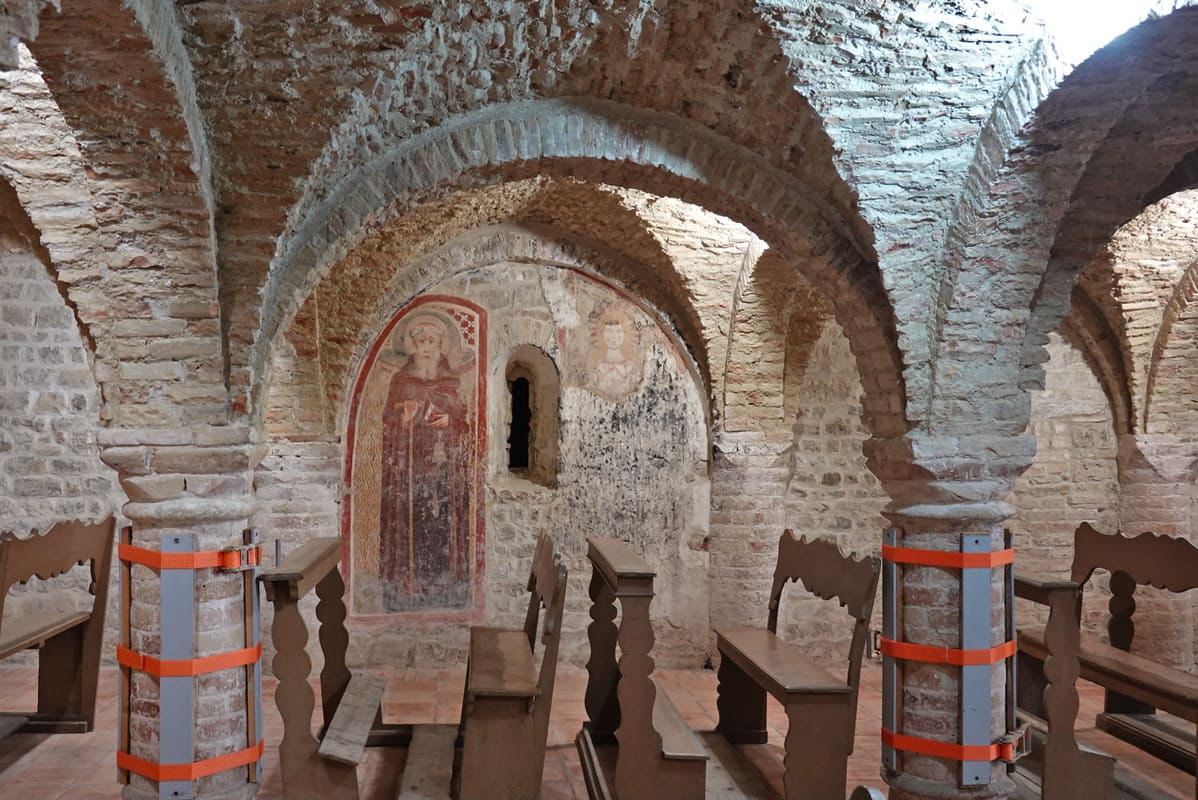
In addition, the beautiful frescoes or remains of it also attracted attention, all by the Maestro of Offida (14th-15th century), Maestro Ugolino di Vanne da Milano (15th century) and Frà Marino Angeli da S. Vittoria (15th century).
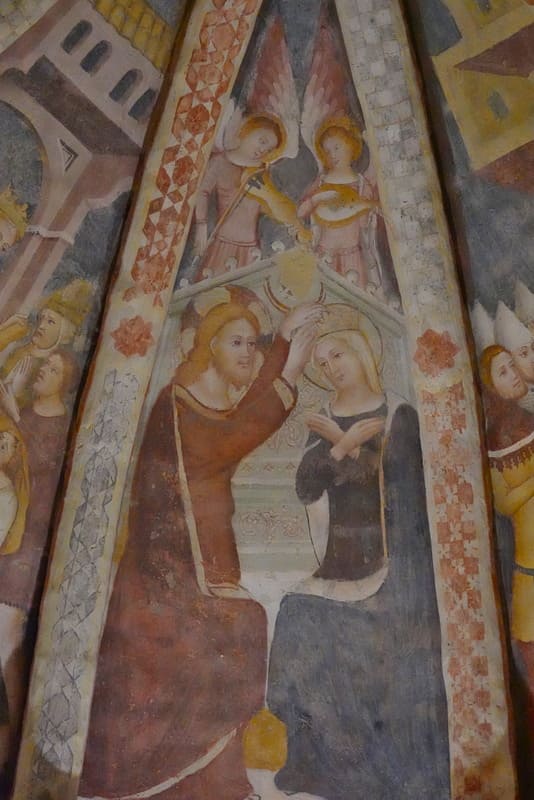
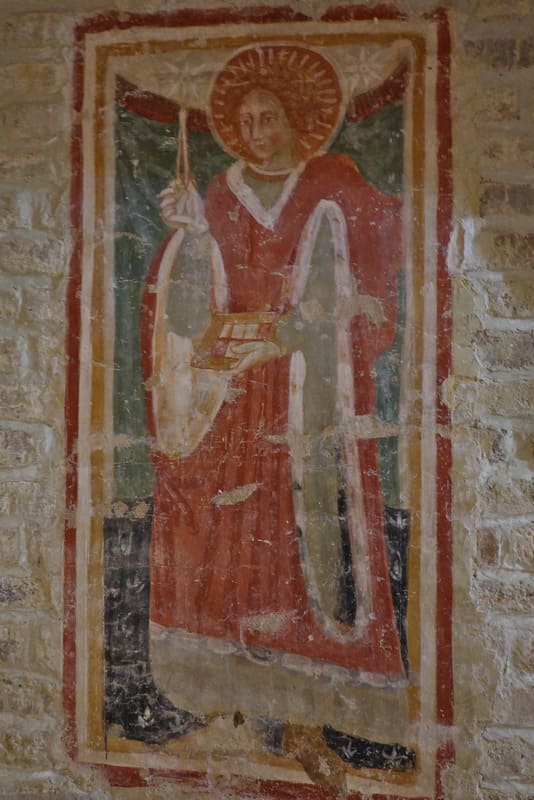
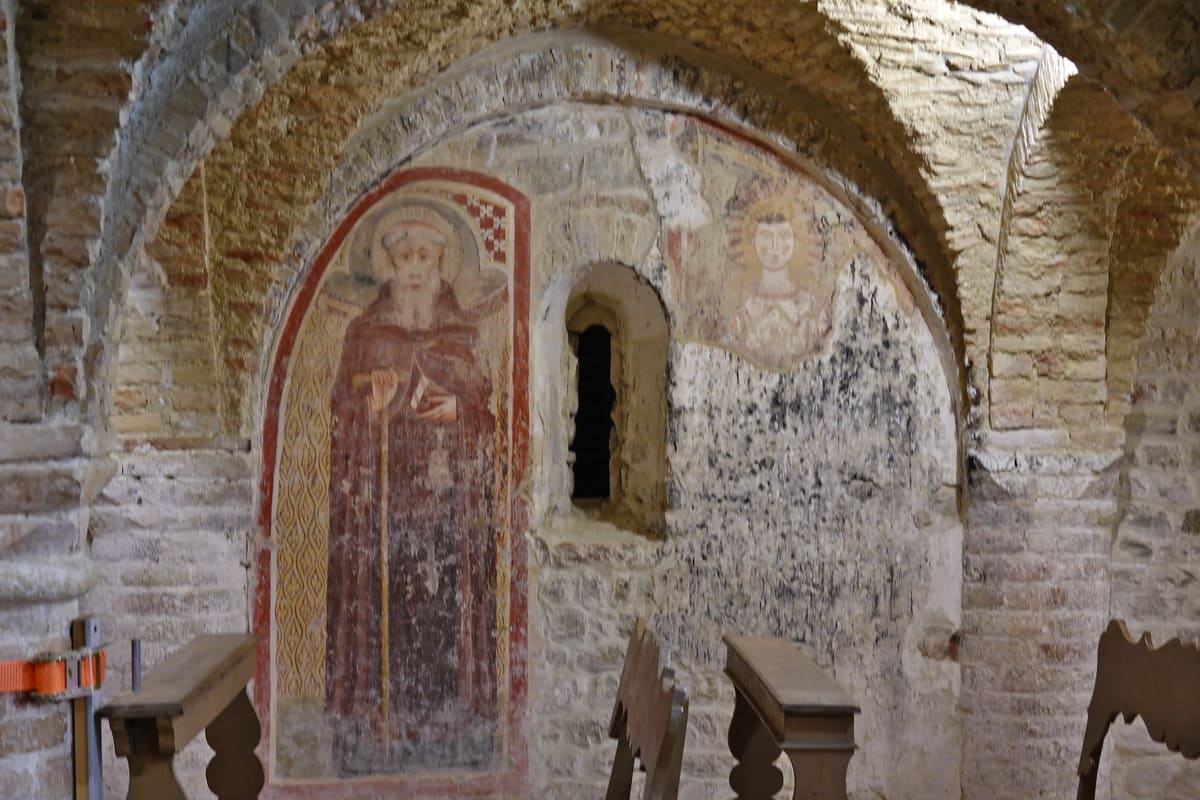
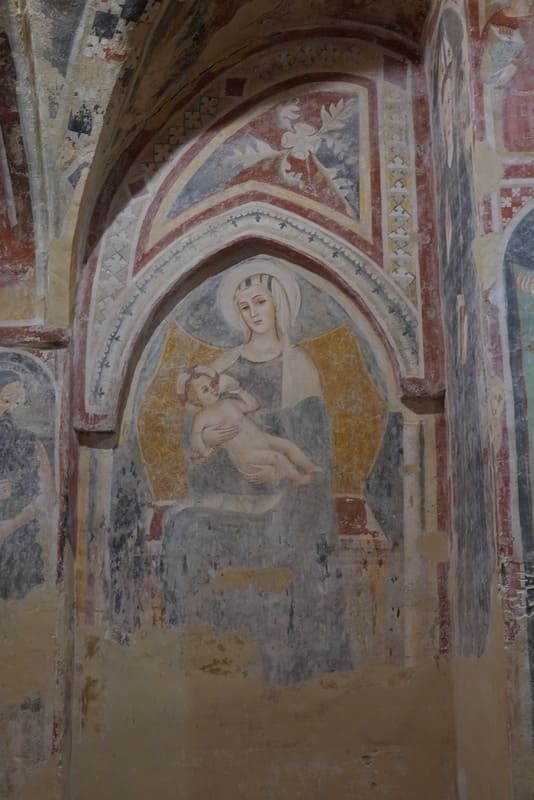

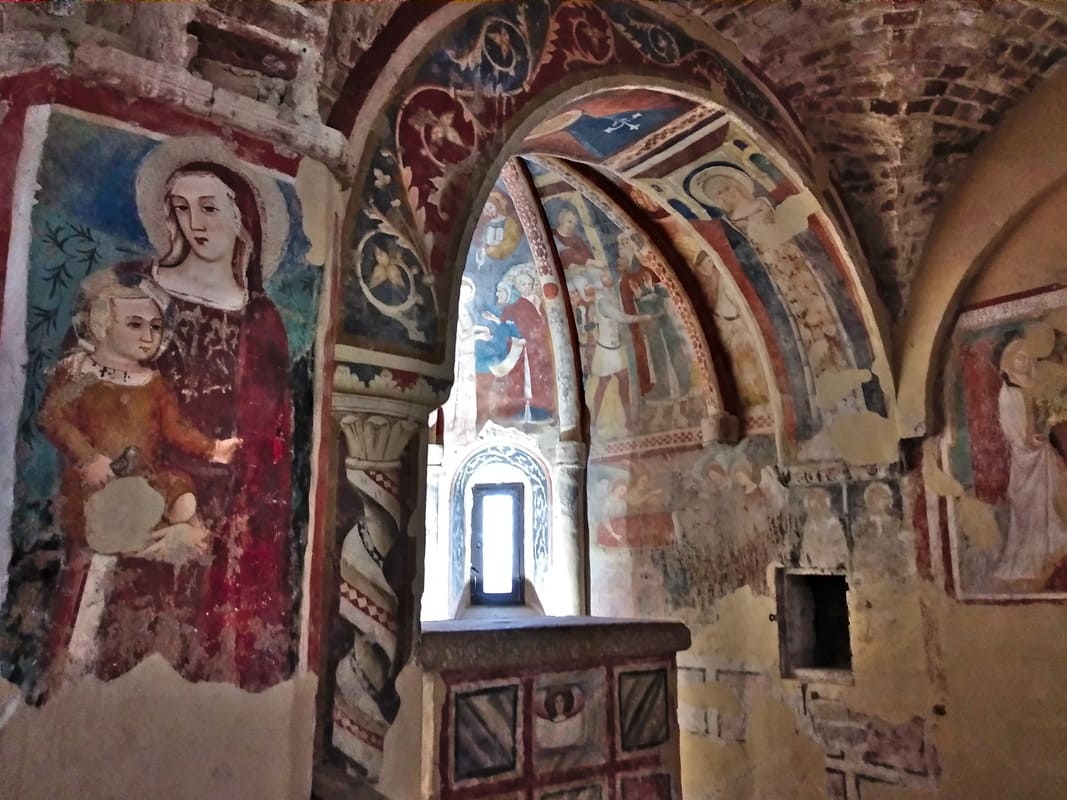
Via a staircase, which used to be the spiral staircase, now closed, visitors arrive at the upper church, consisting of 1 nave. Here again there are frescoes by the Maestro of Offida, including the crucifixion. The Madonna del Latte (iconography of the Virgin Mary while breastfeeding) was again from Frà Marino Angeli.
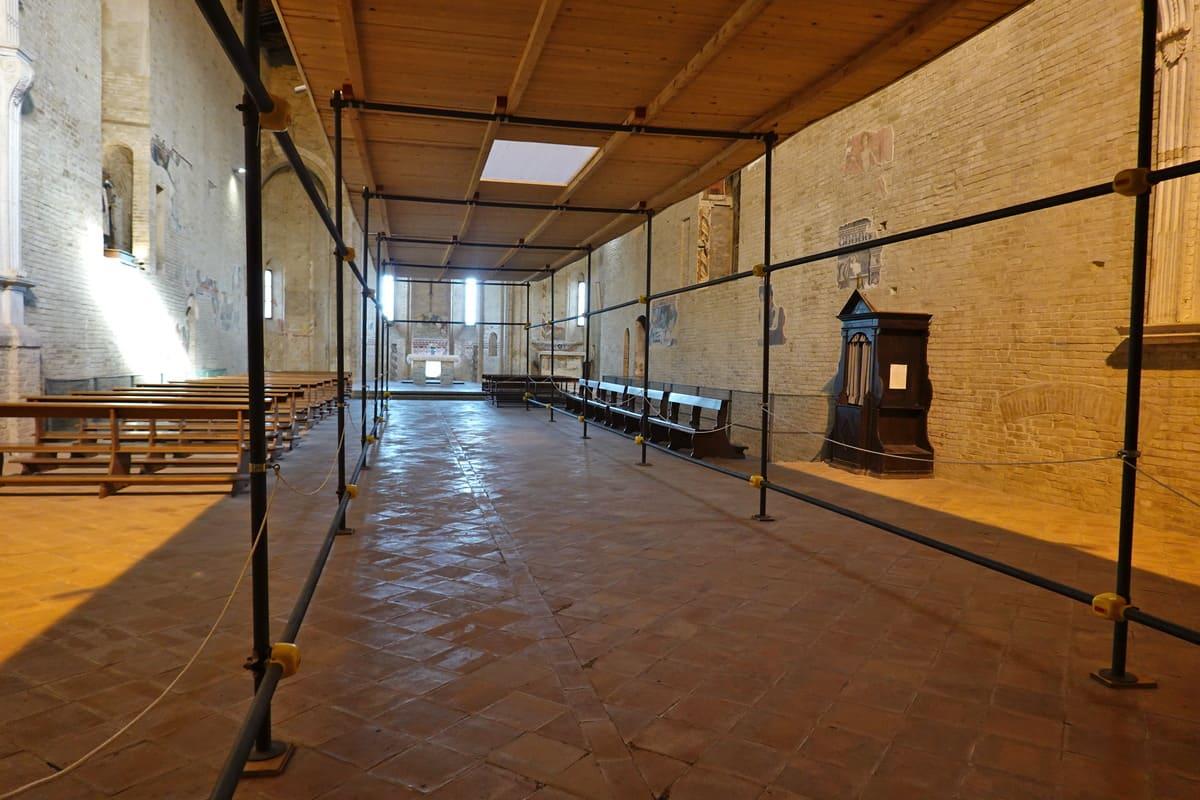
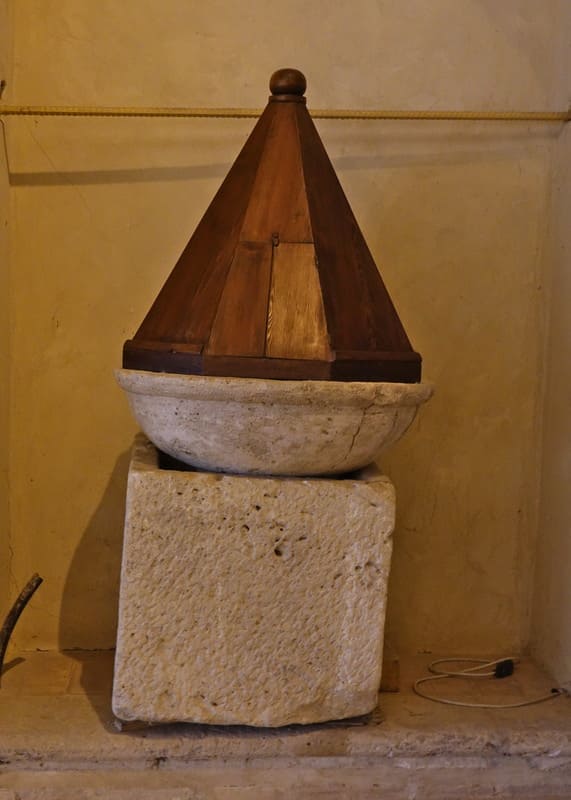


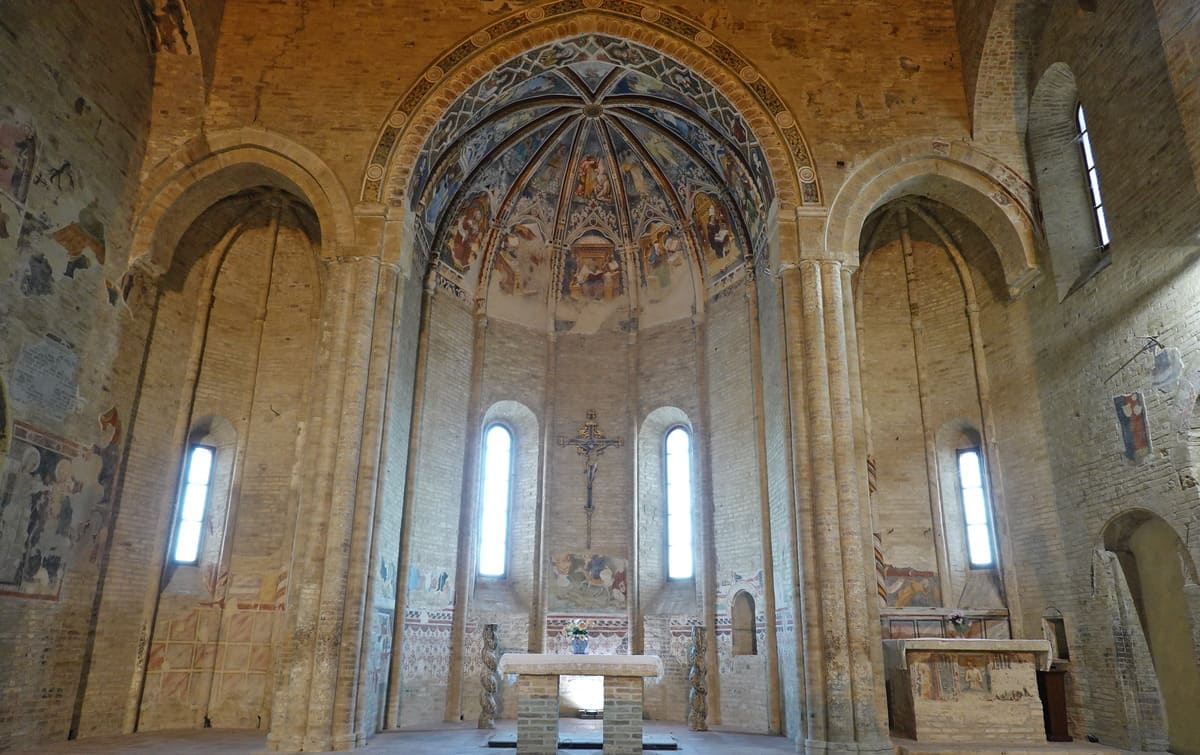
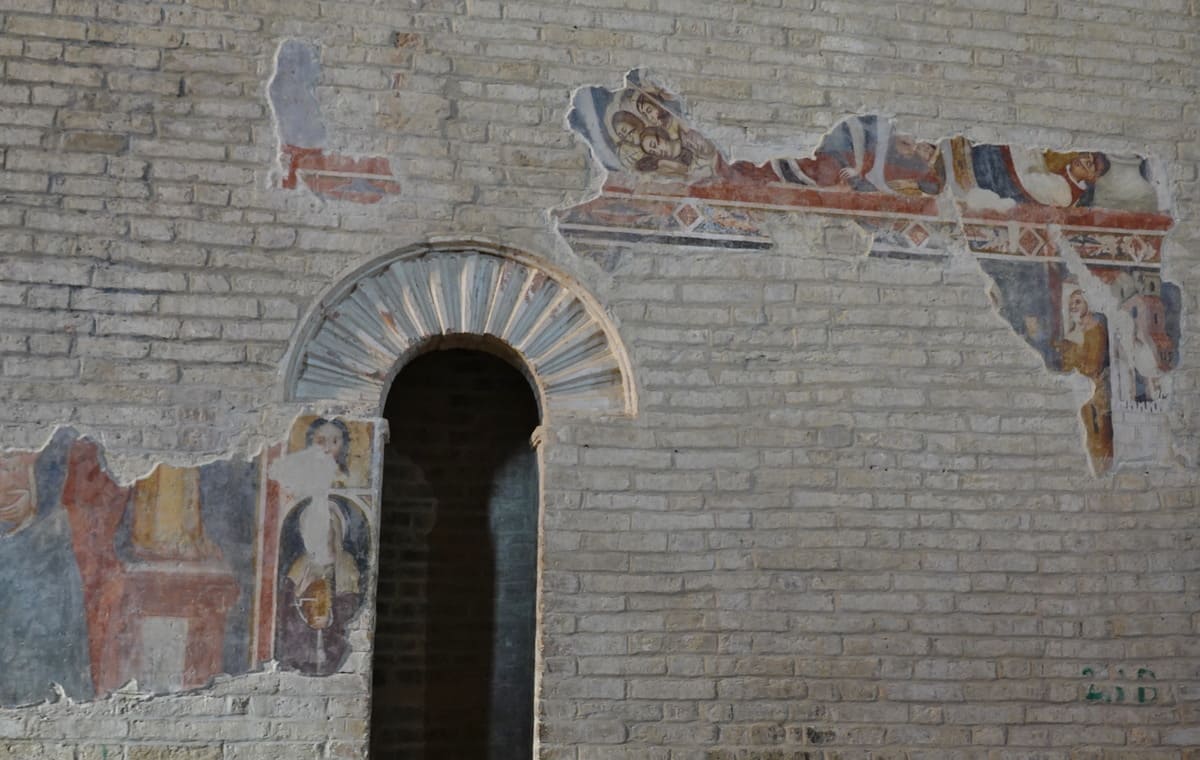
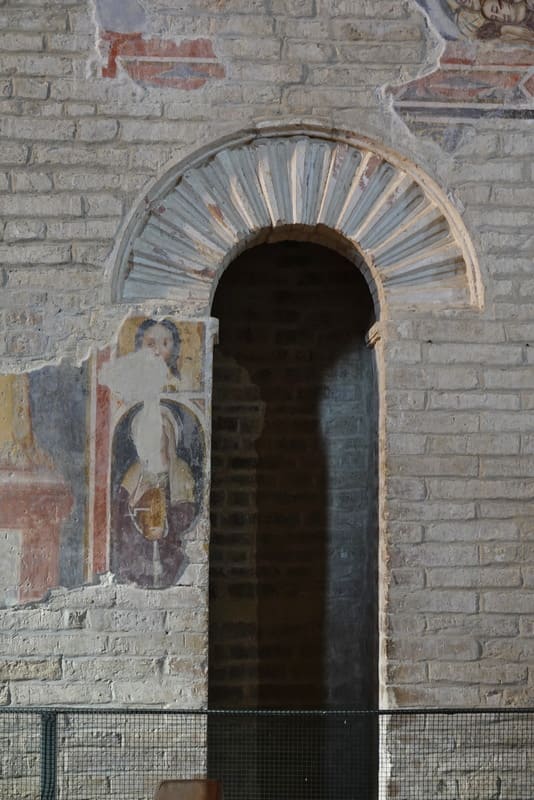
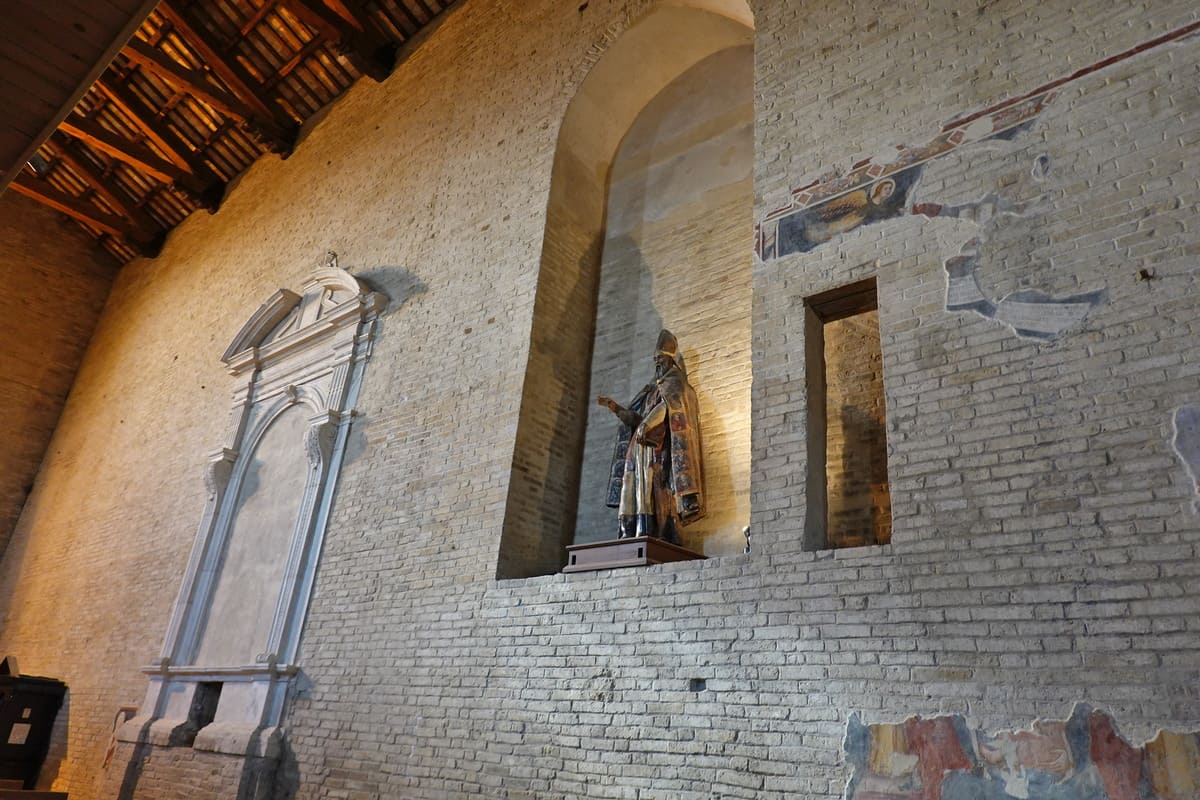
Back to the crypt there is a picture of Mary that is a copy of the one in Collegiata.

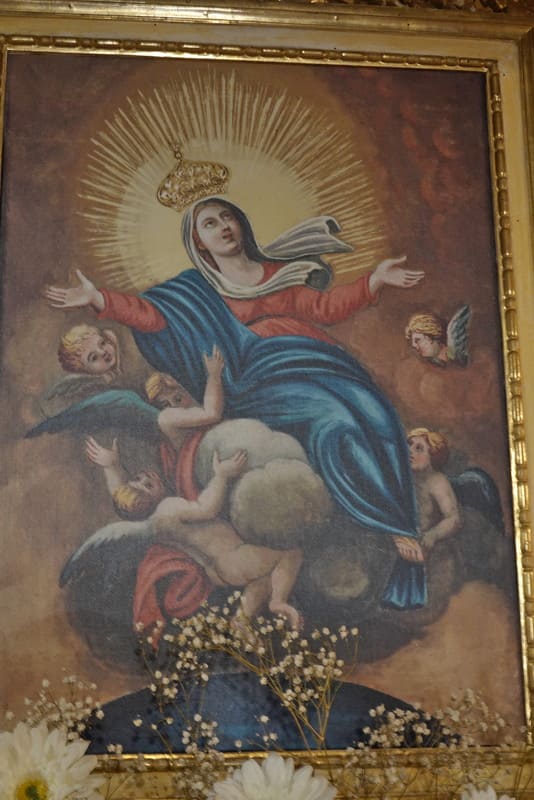
Here you will find the opening hours.
The price was in 2022: 3€
A piece of park was also added, dedicated to the Giusti (the Righteous), the non-Jews who helped the Jews during the war at the risk of their own lives

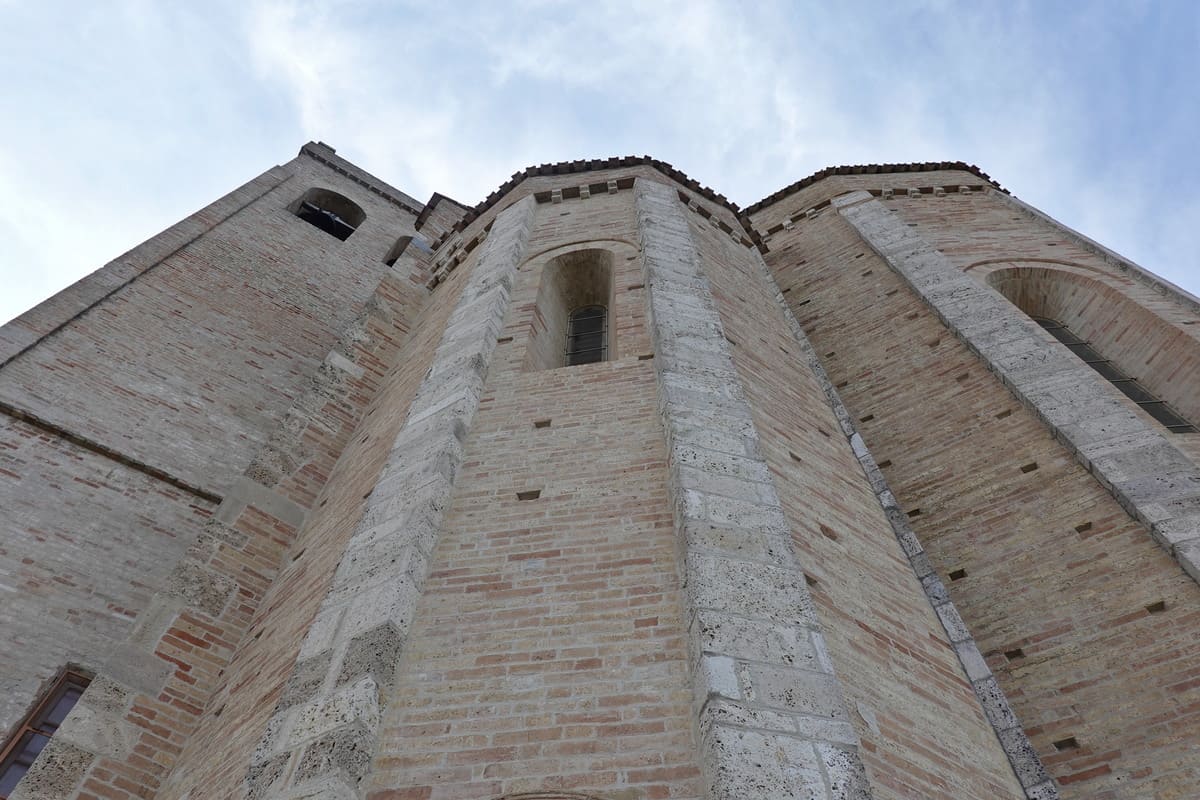
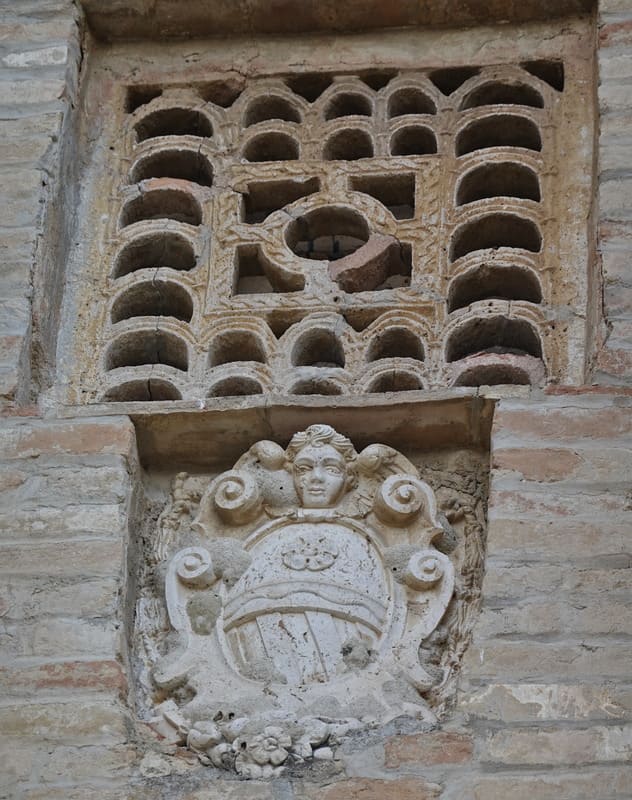
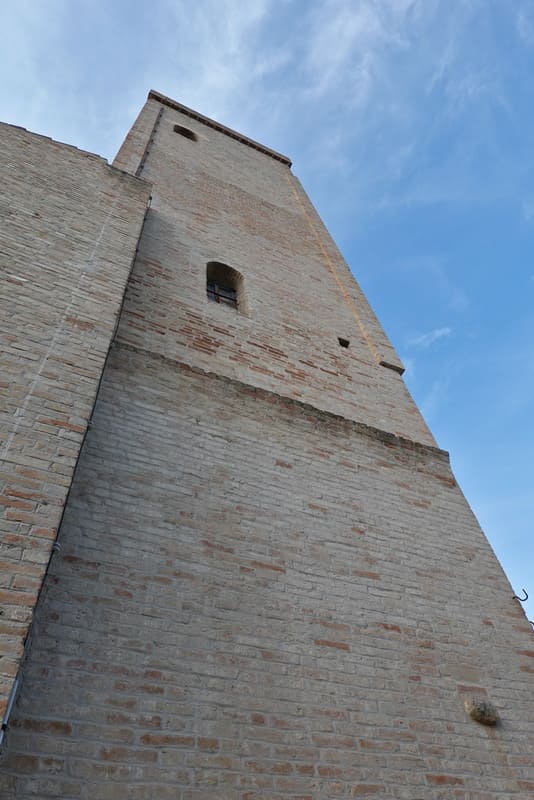

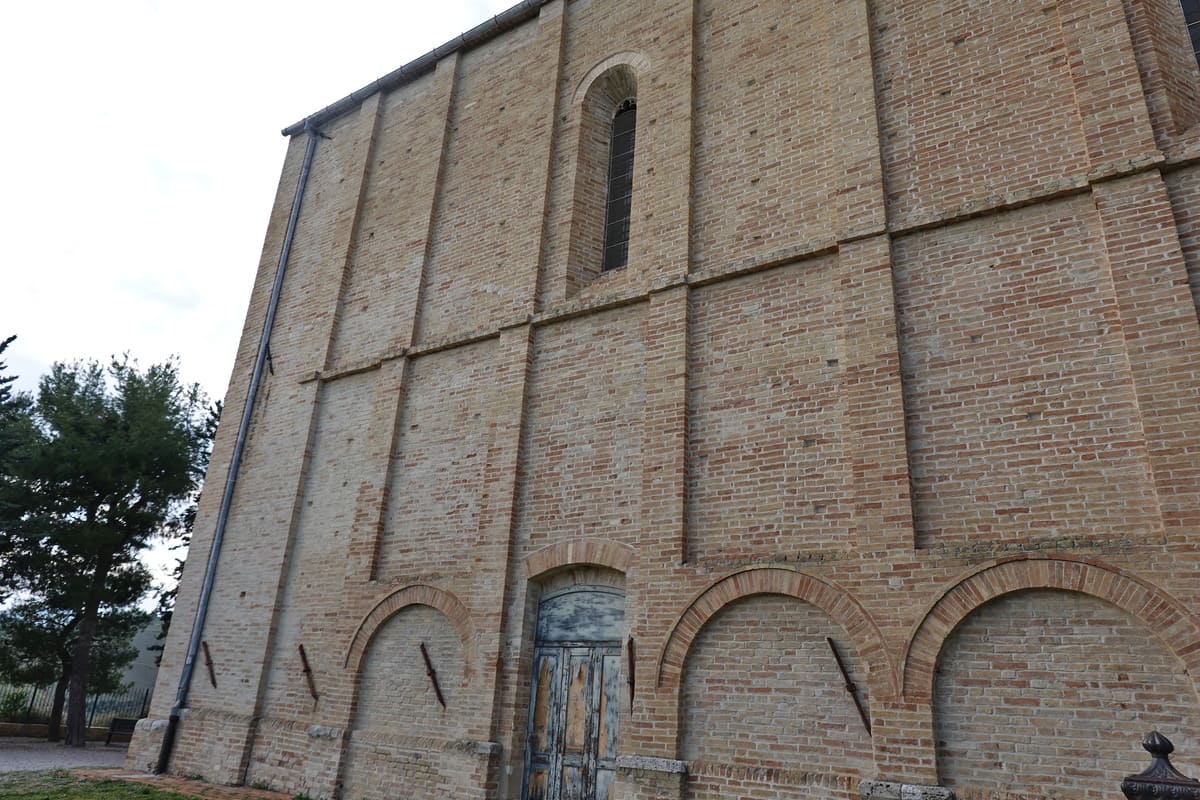
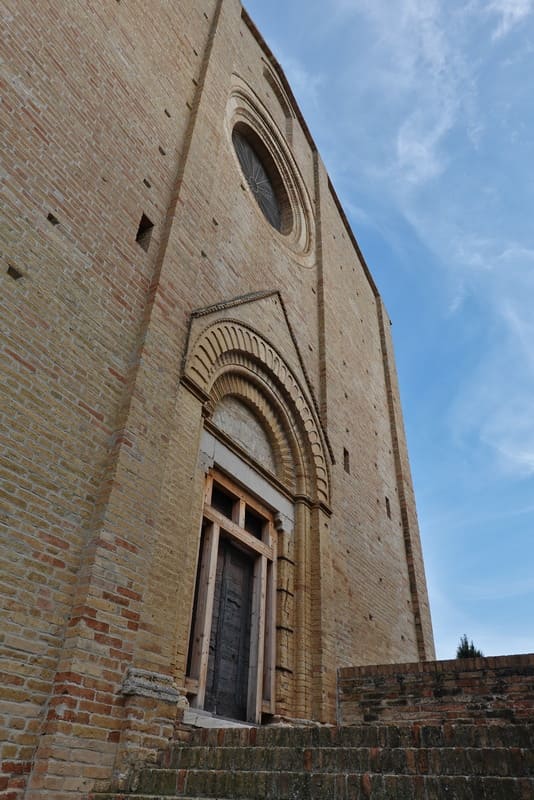

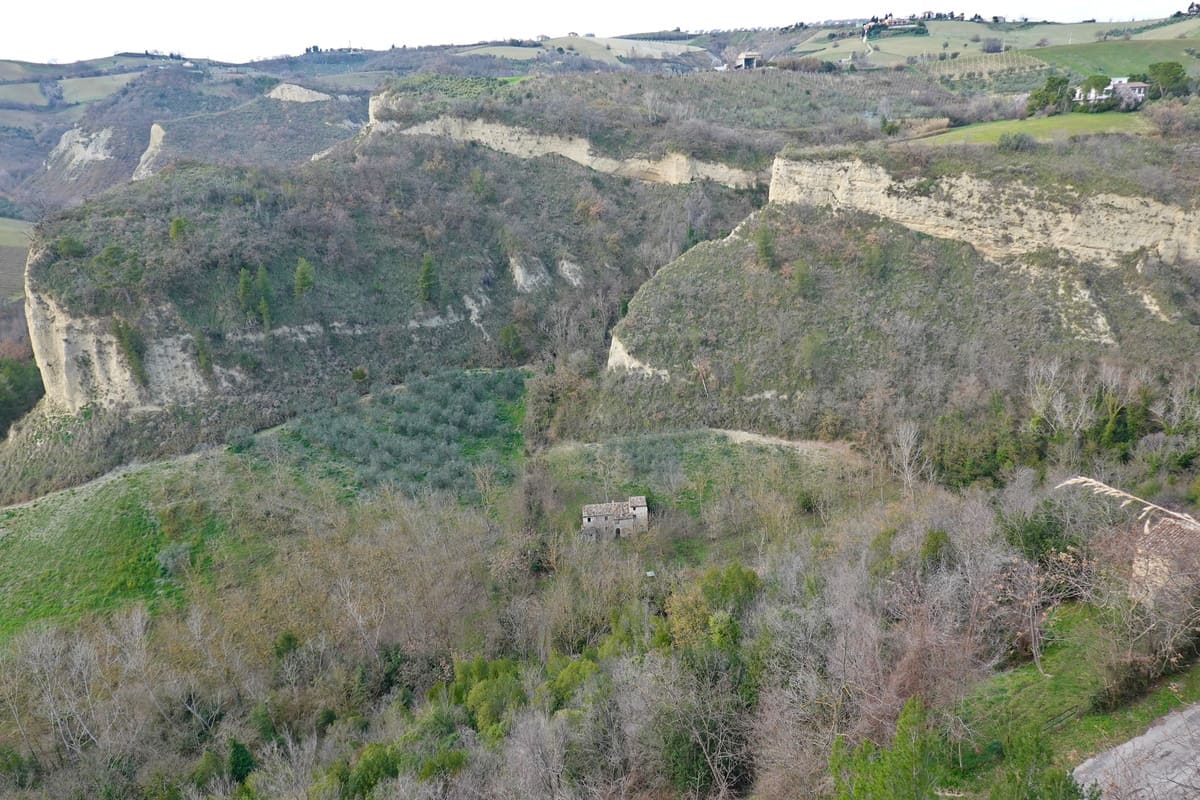



On the way back there are several lace shops. In good weather you could still see a few lacemakers at work outside their houses. But in the winter..
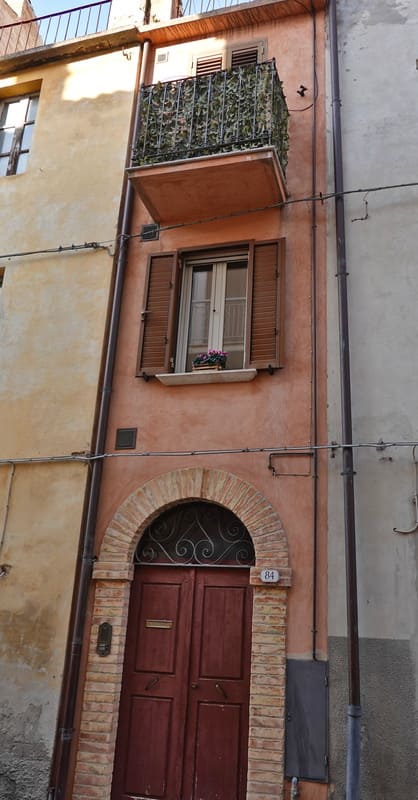
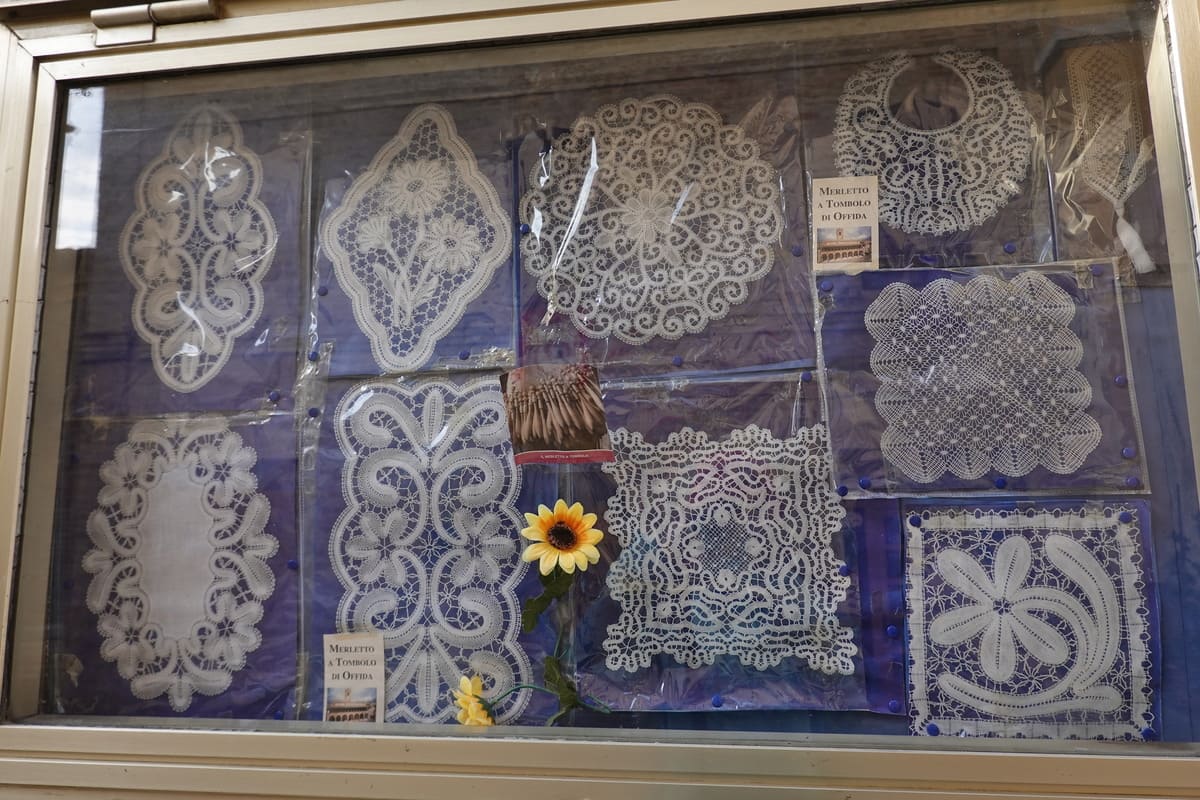
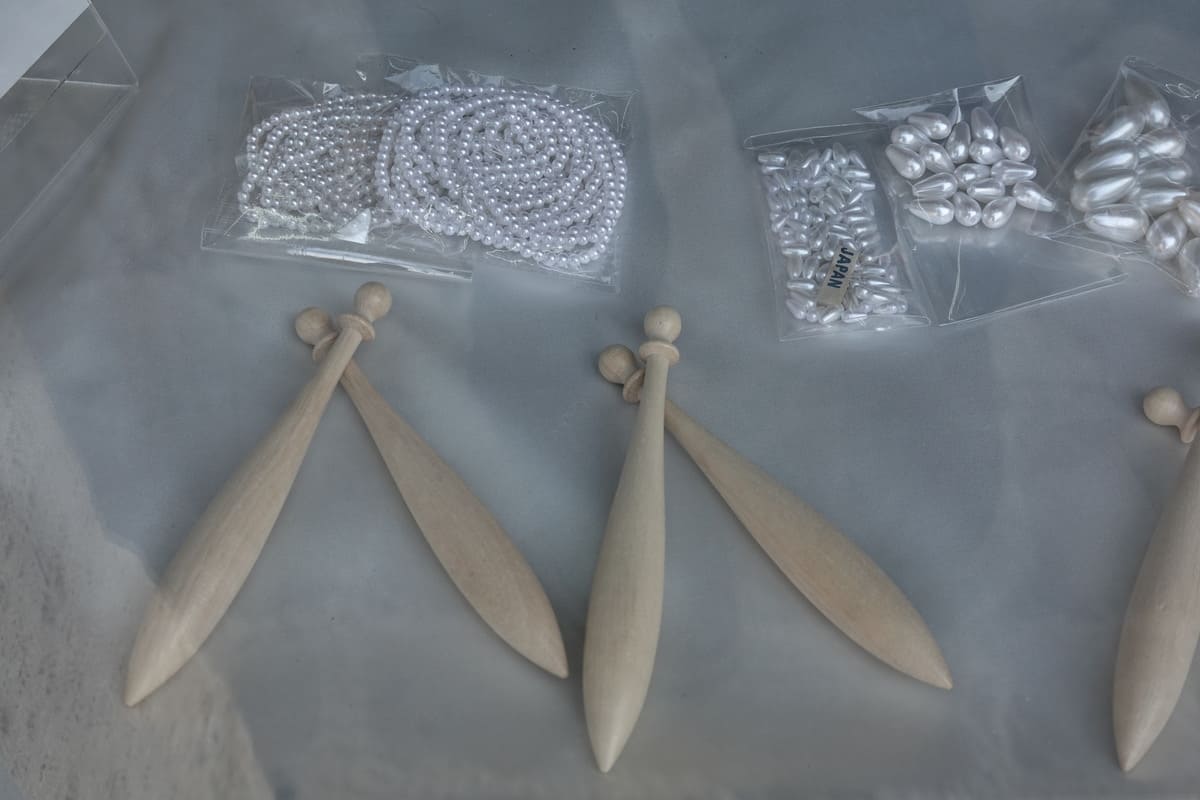
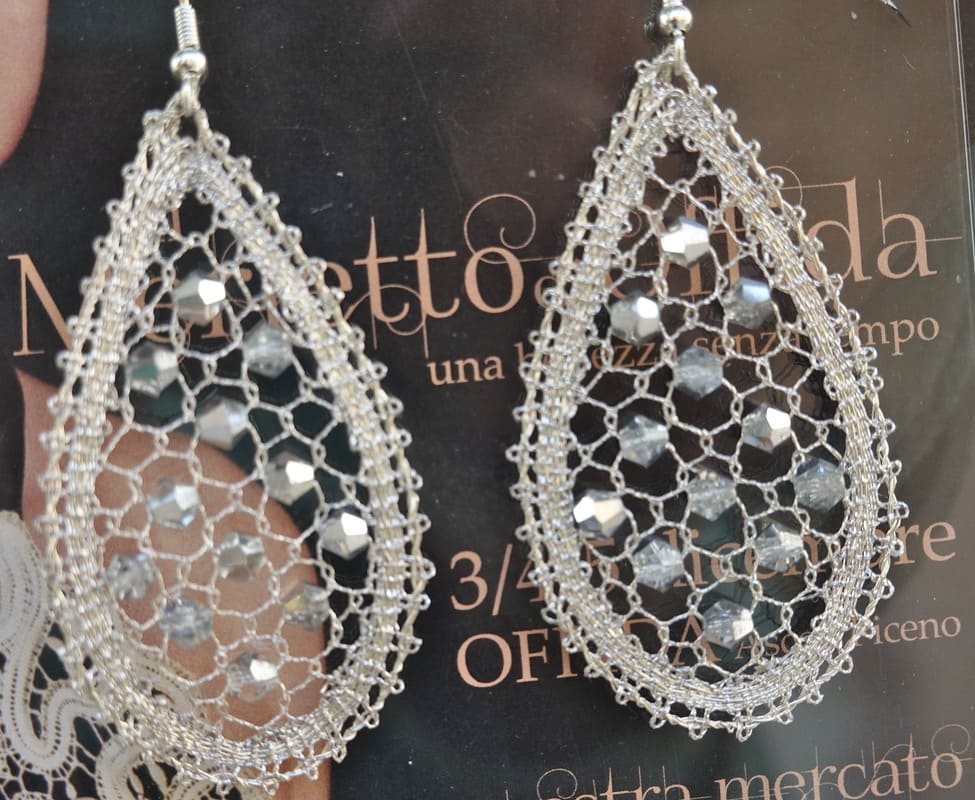
Back at piazza del Popolo, Isabelle and Erik walked past the theatre to turn left into Via del Merletto. After a big bend to the right they were then at the enoteca regional, which unfortunately turned out to be closed on Sundays. Offida is one of the wine towns in the south of Le Marche known for the Rosso di Piceno. Ciù Ciù has his shop in the center as well as San Giovanni to name a few.
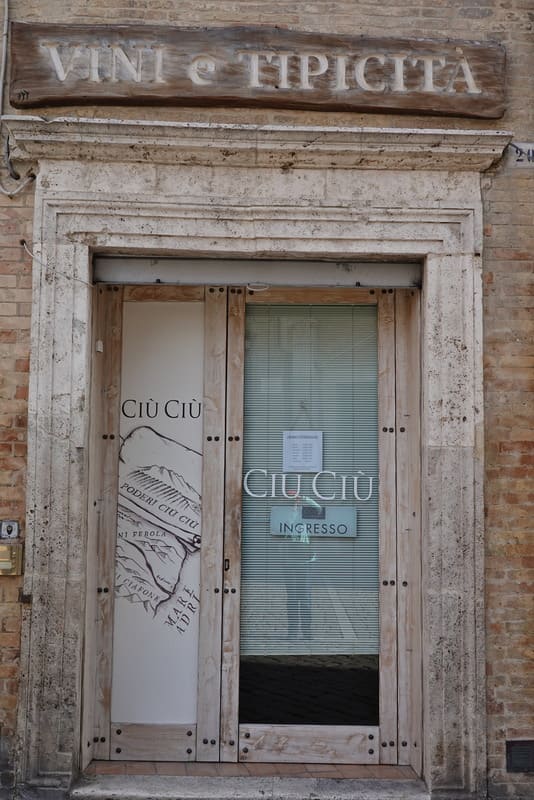

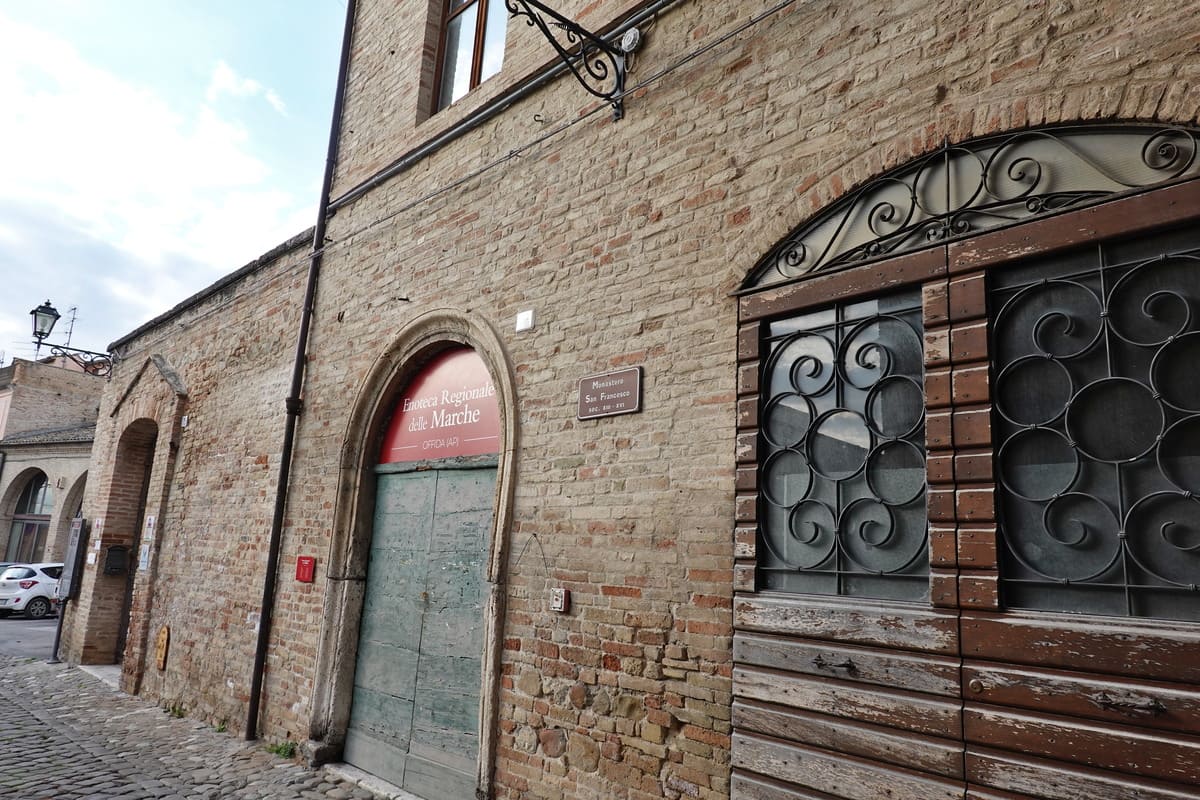
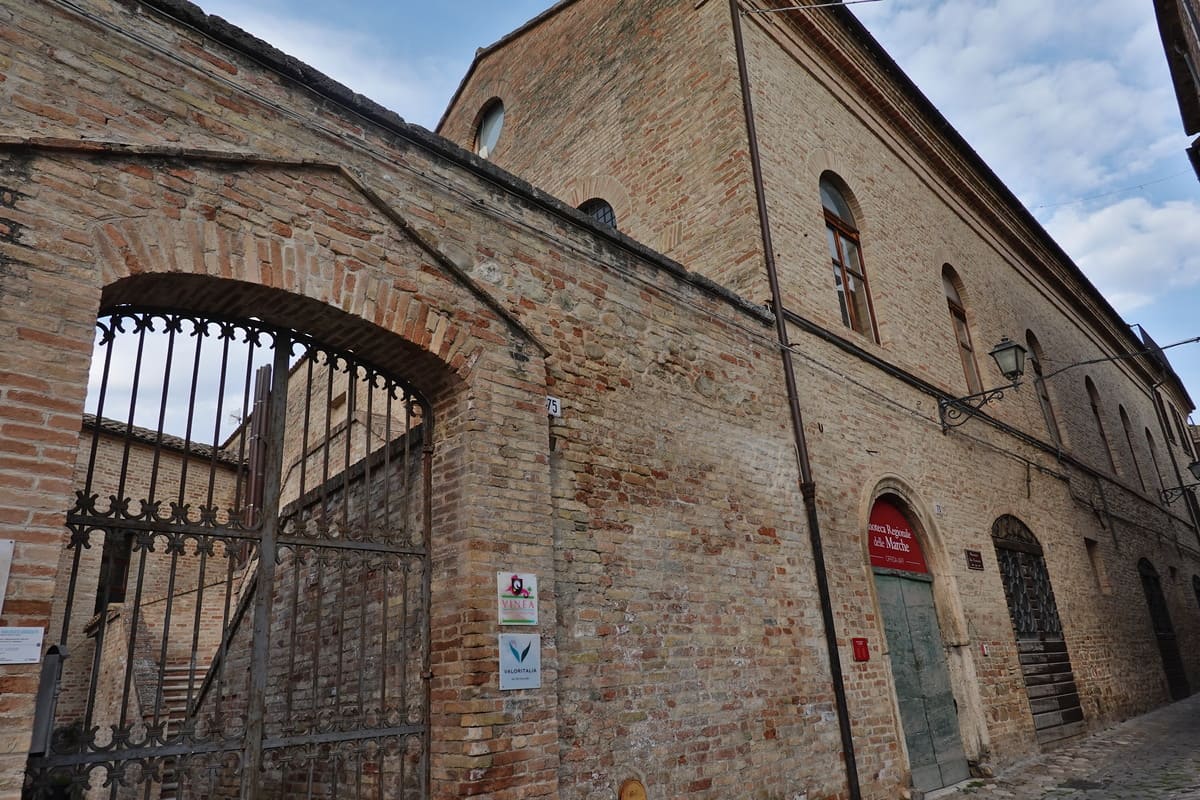
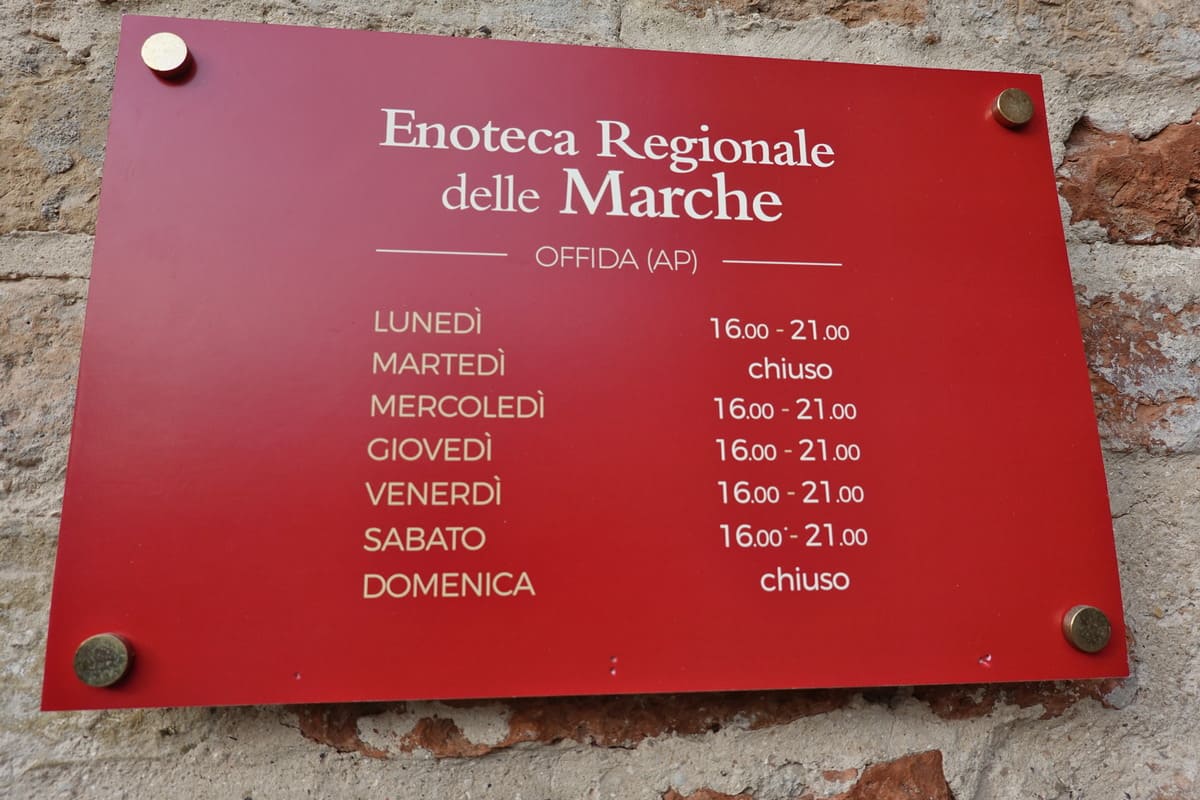
Once a 13th century Franciscus monastery and at the end of the 20th century the regional enoteca. Here you can taste hundreds of different wines from all over the Marche region. In any case, a reason to come back, because you can also have aperitifs and that in such a beautiful historical setting.
If you need three reasons to visit Offida: the carnival, the wines and the lacemakers at work!
More info about this city on their website in English http://www.turismoffida.com/en/index.html or in German http://www.turismoffida.com/de/index.html

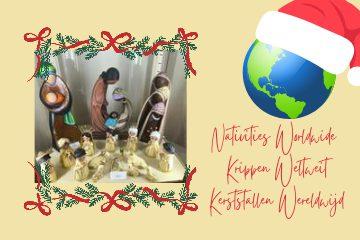
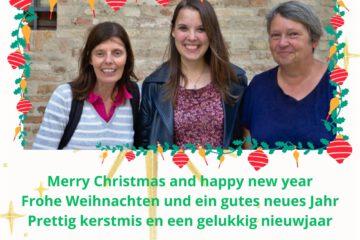
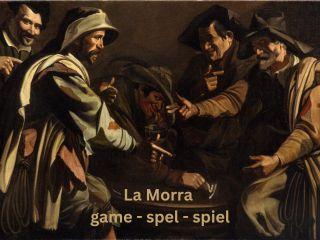
0 Comments